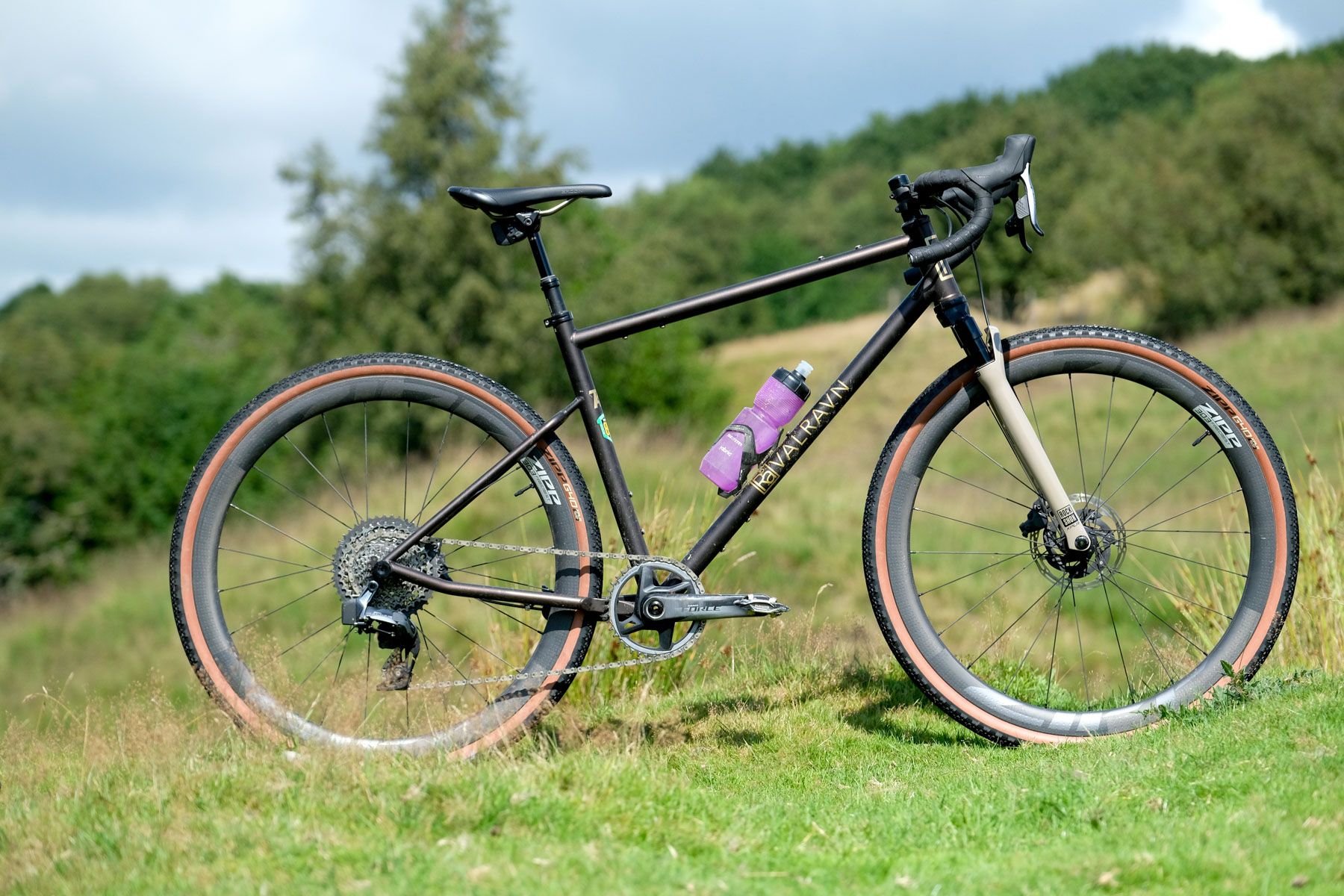
It’s been a crazy year for reviews, just because products have been out of stock, or not even ready when they get launched. So despite talking about this groupset back in March, it took until late July for a rideable bike to appear for this SRAM XPLR review. We didn’t waste any time, though, putting in a half dozen hilly rides in the two weeks since we got the bike, mostly chasing down Great British Divide riders in the rain. It’s been a pretty full-on test period that we reckon has given this brand new gravel groupset a thorough workout. Read on for Chipps’ First Ride XPLR Review.
XPLR AXS First Ride Review
It seems that Alex, our SRAM go-to Media Liaison guy deliberately sought me out to review XPLR (say ‘Explore’ apparently) this new gravel groupset from SRAM. We’d had many chats about ‘Just what is gravel riding?’ in the past and it seemed that my theories of the two worlds of gravel had struck a chord. I reckon that there are two gravels – there’s ‘London or American Gravel’ which features a lot of long, fast, smooth rides on a crunchy surface with no sudden changes in altitude. And then there’s ‘Northern Gravel’ (which includes anywhere north of Bristol…) and is a sport where drop bar bikes are ridden on any and every surface – like we used to attempt on our nineties mountain bikes. While SRAM XPLR was probably a shoo-in for London Gravelleurs, with smooth, wireless shifting and slick tyres, it would be a harder sell for mountain bikers. Hence this bike that Alex built up for me for my own XPLR Review
At its heart, this is a made-in-Yorkshire steel frame by Rafi at Ra Bikes. He’s been building custom steel frames for years – including his own downhill 29ers a decade ago – and he wanted to build a more ‘progressive‘ gravel bike that would suit this new SRAM XPLR groupset. The bike features a roomy reach and a mountain bike-short stem which combines with the steeper seat tube to give a nicely familiar feel for a mountain biker hopping on to the bike. And how about that sparkly colour? The acceptable face of brown, I reckon.
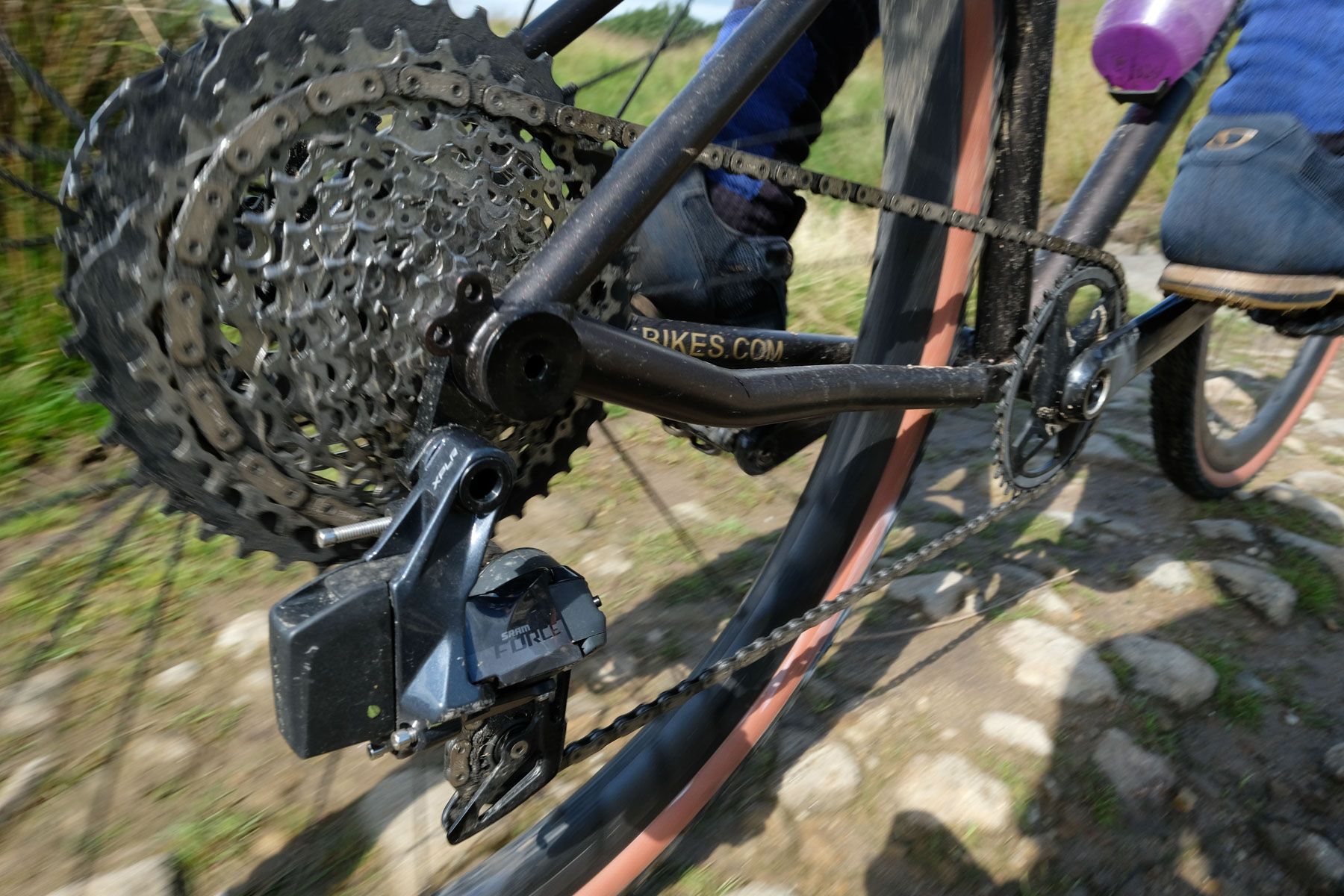
If you aren’t already clued up on the SRAM XPLR group, head over to our news story here. Briefly, it’s a groupset for drop bar off road bikes. There’s a short travel Rockshox Rudy suspension fork, wireless SRAM AXS shifters, a wireless AXS dropper post (in 50mm or 75mm drop) and a gravel-friendly inbetweeny 10-44 SRAM cassette that pairs with a flat-top chain and a one piece single ring that comes in a 38 up to a 44. As you might expect, there’s no double chainring version. There are three XPLR groups, in line with SRAM’s road hierarchy: Rival, Force and Red. Thanks to a certain amount of hot-swappery, there are options to mix in SRAM’s wireless Eagle XX and GX components, but there are some limits. Wheels are going to be a slimmer version of ZIPP’s single wall Moto wheels, but they’re not out until later in August, so for now we have some lovely ZIPP 303 Firecrest wheels. Oh, and there are even XPLR tyres too! More on that in a bit. We have a ride to do.
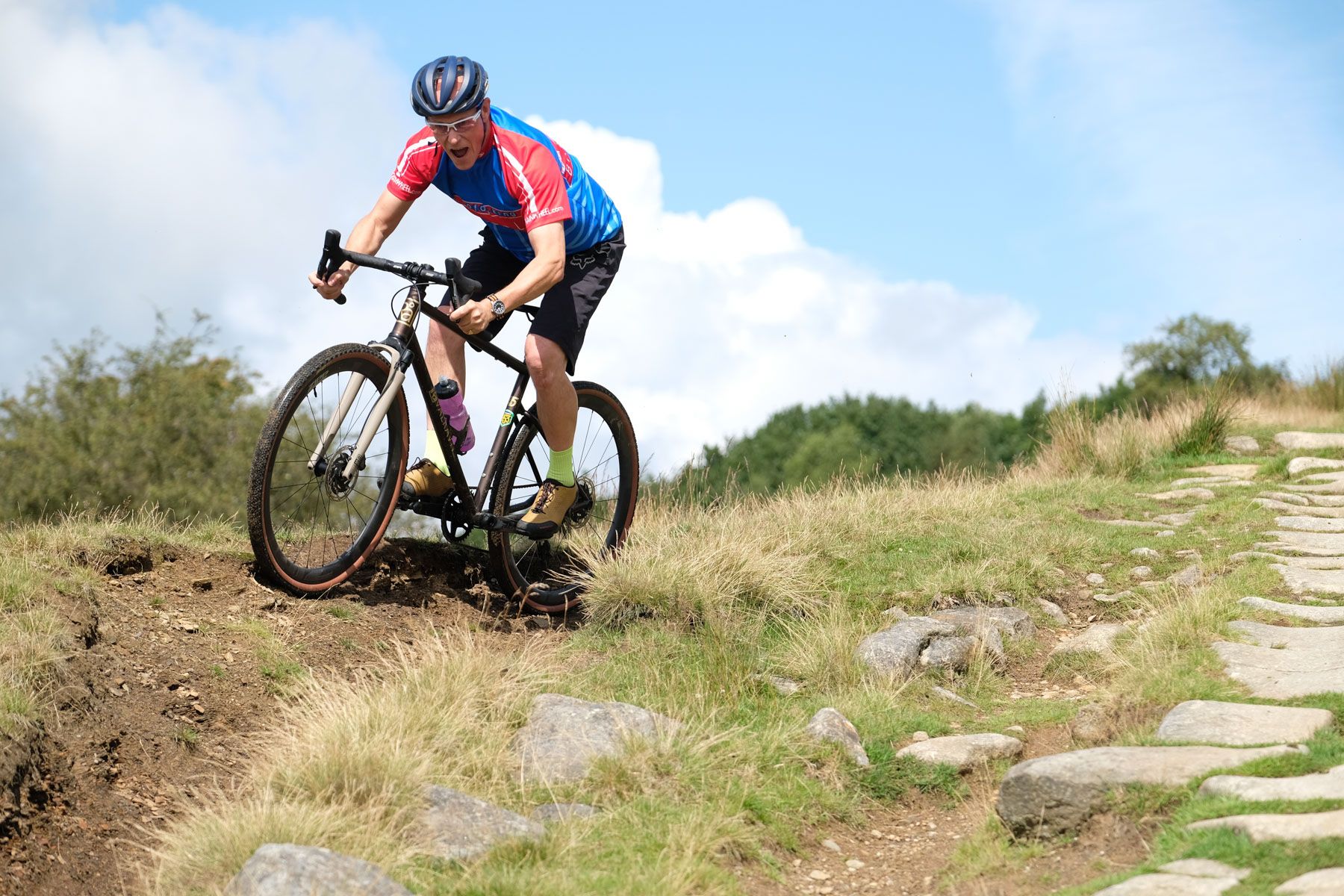
The XPLR gearing is an interesting one. Using SRAM’s XDr road drivers (a road version of the small mountain bike cassette driver) the whole XPLR groupset is based around a single, 12 speed 10-44 cassette (10, 11, 13, 15, 17, 19, 21, 24, 28, 32, 38, 44). If you want to change from that, you can swap out the chainring – (38, 40, 42, 44 or 46T) but that’s it. You can run an Eagle 10-50 or 10-52 cassette, but you’d need to run an Eagle AXS rear mech and chain too.
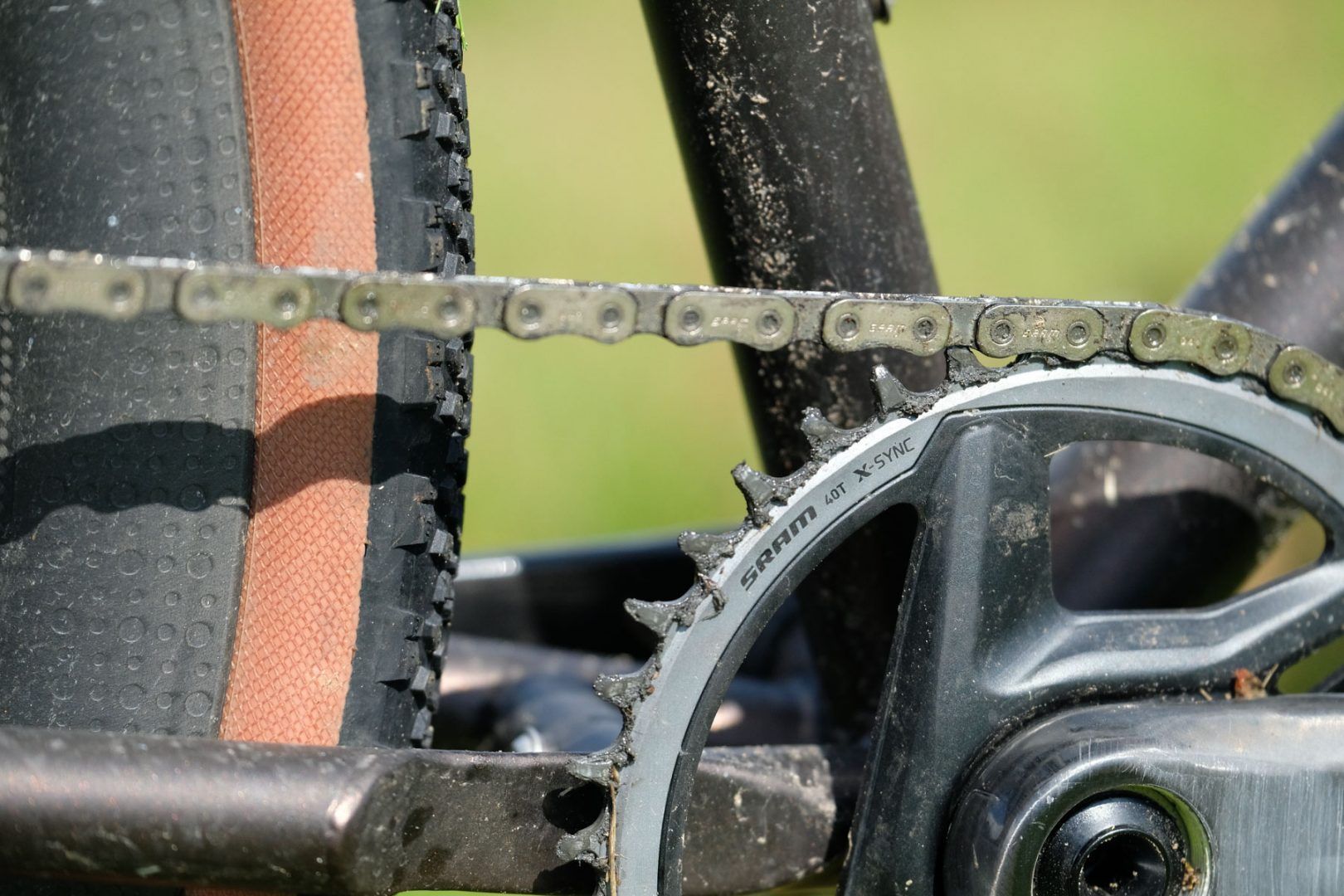
So it’s a pretty narrowed-in range. Mind you, Eagle’s 10-50 only came in one ratio for years and that seemed to suit most mountain bikers… I’ve found that, with the XPLR 40T ring that I have fitted, I will spin out when chasing my roadie pals down a hill, but for general riding around, it’s a pretty good top gear. At the other end, the 44T big sprocket lets me climb just about everything around here that I can get up on a mountain bike. Though I’ll caveat that with ‘on a good day’ and ‘in the dry’. The gearing is just enough for most uses. This makes is perfect for most riders of this kind of bike. Choose the ring size for you and your terrain and you should be fine.
Elsewhere, we’re treated to SRAM’s Force (in this case) Flat Mount calipers (there are post mount ones, but they’re only at the RED level) which have offered great braking and feel, though after a little more than 200km and some VERY wet rides, the brake levers are starting to bottom out on the handlebars, despite adjusting the (very neat) brake bite point screw to maximum ‘on’.
Rockshox Rudy Suspension
Up front. Oh, this old thing? Yep, it’s a suspension fork! Yes, even more re-inventing the mountain bikes of the 1990s, the XPLR group includes the Rudy fork, which is a nod to the original Ruby road suspension fork (that won the Paris Roubaix twice under Gilbert Duclos-Lasalle in the early nineties) and the original Judy, even coming in a close match of the Judy XC ‘Champagne’ finish. There are two travel versions – 30mm or 40mm, enough to take the sting out of things. Here we have the 40mm version. It’s air sprung, with a lower rebound control and a 90 degree lockout knob on the top.
Let’s hop on this machine. It immediately feels good, with the controls comfortable and easy to hand. SRAM’s AXS road levers are one of the highlights: comfortable, wide enough for a good grip and with big, idiot (and winter glove)-resistant shift buttons inside the main brake lever. Left button for easier gears, right for harder (think ‘Easy Tiger!’ and you’ll get them in the right order) and both at once to operate the AXS XPLR wireless dropper. Anyone who’s used a regular AXS Reverb will tell you how slick the post operation is. It turns a clunky lever push into a simple mouse-click. And here’s it’s the same, only it’s two simultaneous mouse-clicks. It’s brilliantly simple (though not entirely perfect, as we’ll discover).
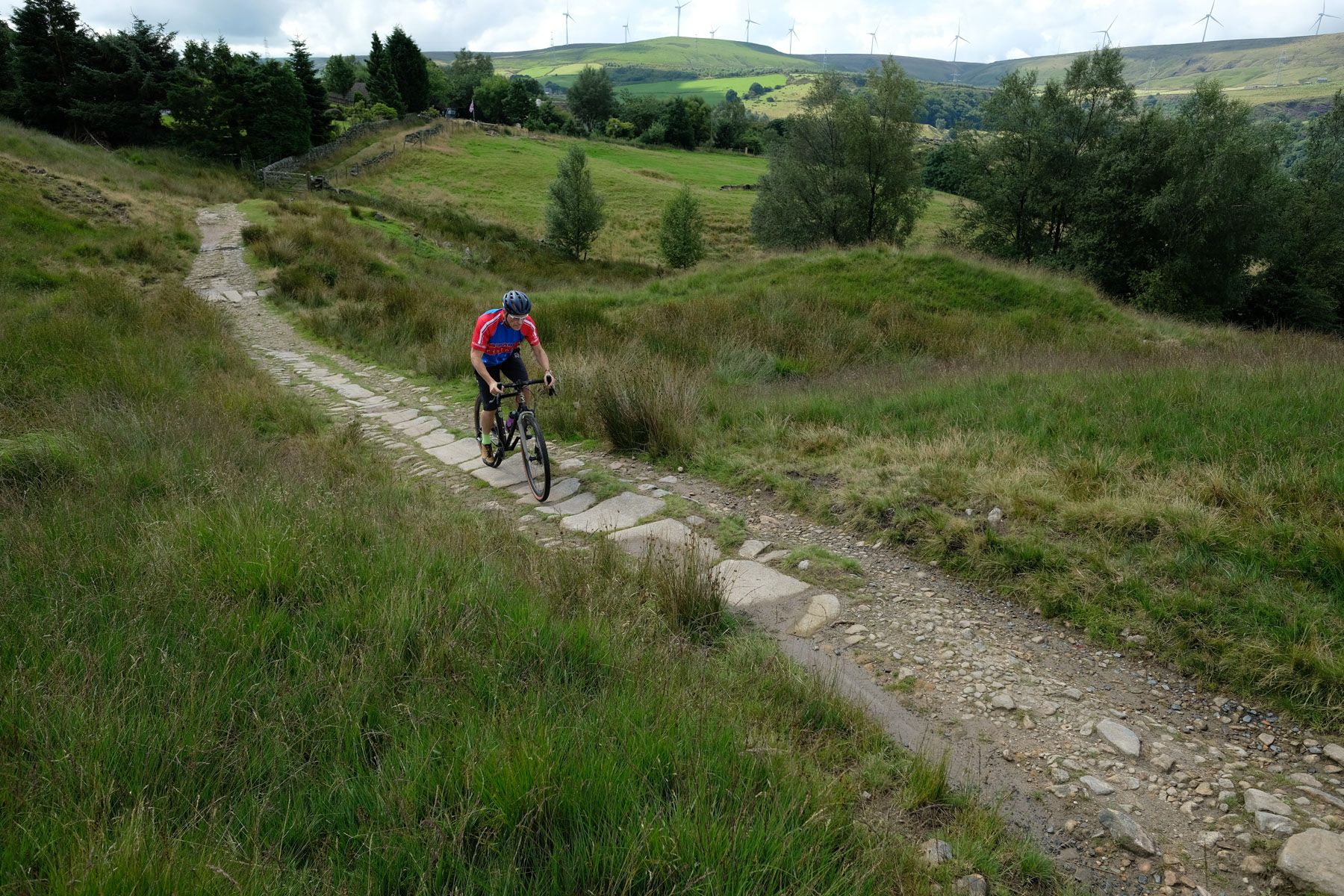
Despite only previously trying SRAM’s road shifters a couple of times before, I found them instantly intuitive to use. The shift buttons sit under your fingers and regular shifting is easy. The jumps in the cassette are also pretty natural feeling with no extra-big jump to bigger or smaller gears. I rode this test bike on a half dozen rides in the fortnight preview I’ve had on the XPLR groupset and I’ve really enjoyed it, covering 200km or more. Straight off, I’d decided to treat the bike as more of a go-anywhere machine and it didn’t disappoint. SRAM reckons that its mech battery is good for about 600miles of riding, and a charge is an easy job, as is keeping a spare battery in your bag. You can even swap batteries between dropper and mech.
XPLR AXS Reverb
The addition of a short-travel dropper may seem odd to some riders more used to flatter trails in the ‘London Gravel’ style, but for riders who are using SRAM’s XPLR as a true all terrain groupset, it makes a huge difference. That 50mm or 75mm is just enough to get the saddle out of the way on tricky descents (even road ones) and if you’re running a bikepacking seat pack, it’ll probably still let you clear your rear wheel with it on full drop. Press both shifter buttons and the post will instantly release its lock and do your bidding with its (adjustable) air pressured spring.
Something RockShox is keen to point out is the ‘ActiveRide’ system, which means that if the post isn’t fully up or down, then it’s sat, unlocked on the column of compressed air that returns it to full extension. This does a great job of acting as a suspension seatpost – great for keeping the power down over awkward cobbles. Call me a cynic, but I reckon that this was just something the engineers found by accident – but regardless, it’s a good feature. However, the 50mm drop post has such a short throw that it’s basically binary: up or down, so the feature is very hard to access. It’s more useful on the 75mm post, though how fussy you are about your exact pedal height will determine how long you use it for.
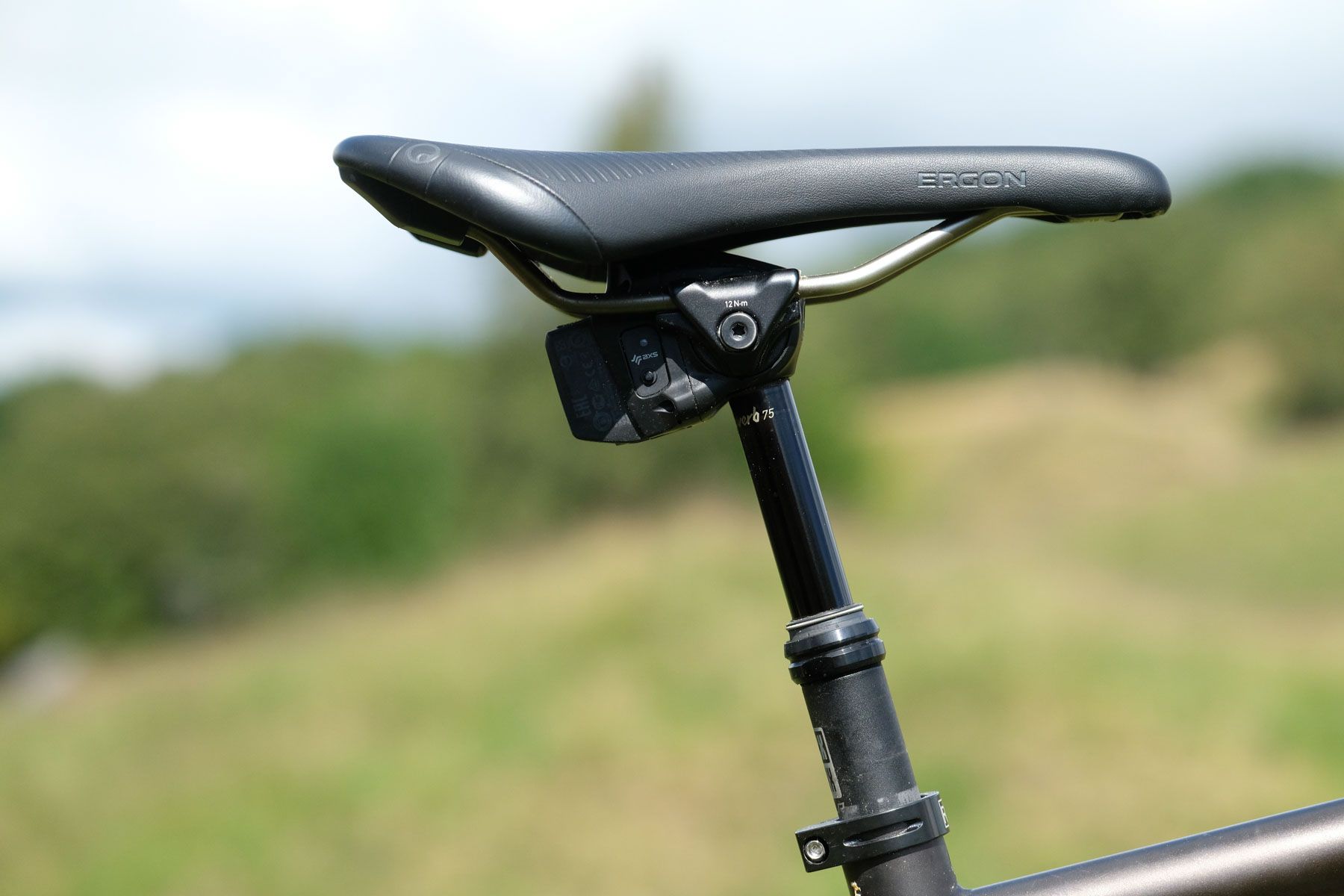
While we’re on the XPLR review of the dropper post – kudos for bringing it out in 27.2mm, Rockshox (with shims for 30.9. That should please riders of quirky bikes (though given that the rest of the group is very modern in terms of standards, you’re unlikely to be putting a whole XPLR group on your 1998 GT Timberline. We can see a few appearing on technical ‘cross courses like the Three Peaks… One issue I did have was that if you commit to a descent, hands on the brake levers and discover that the post is still fully up, it’s near-on impossible to press both shifter buttons without releasing your grip on the brake levers. Again, not something that will bother you on smooth trails, but it’s a tough discovery on a choppy, steep descent.
Moving on to ZIPP, a word of praise for the ZIPP Service Course handlebar. While it feels like a normal drop bar at first feel, a quick look confirms a fair amount of flare below the brake levers. This gives the rider a good, familiar position on the tops and hoods, but a lot of comfort and control when on the short-drop drops. Joining the ZIPP spec on this particular bike were some of ZIPP’s Firecrest 303 wheels. Normally found on racing ‘cross bikes, these were specced due to a lack of the ZIPP MOTO wheels being available at the time. They’ve so far been faultless, but I’m keen to try the lower profile MOTO wheels when they do come out, to see if the claims of a lower-fatigue ride are true. One ZIPP product that did make the XPLR Review was the ZIPP G40 clincher tyre. Measuring up at just over 42mm on my digital calipers, they feature a fast rolling centre tread with some shoulder knobs. Nothing dramatic, though. This seems to be a tyre that grips on sheer surface area and the edges of the tiny blocks. It certainly does it well enough you forget just how little tread you have, until you run out of grip – which to be fair isn’t that often at all.
As mentioned, I’ve ridden almost nothing else in the last fortnight. I’ve really, really enjoyed trying to push the limits of the bike, the tyres and my own mediocre talents in trying to find where it stops being fun any more. And so far, I’ve yet to hit that limit. Basically any trail that I’d ride on a 100mm race bike, I can ride the Ra Valravn on. In fact, anywhere I’d take my 130mm trail bike, I’d probably have a go on this too, albeit with a little more care.
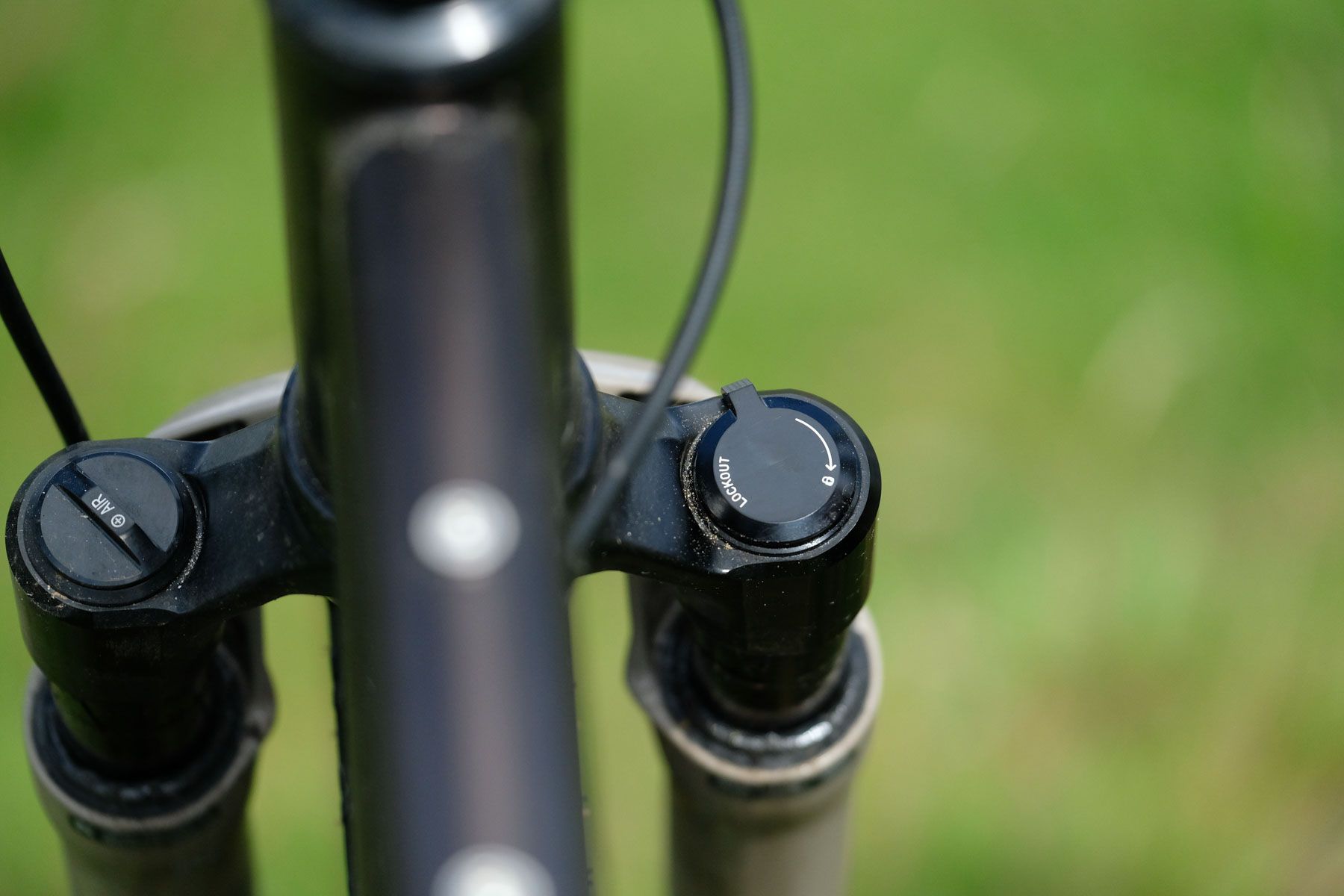
Riding drops with a suspension fork has been interesting. The 40mm travel is firm, but enough to take the buzz out and to give you a few saves from ‘Jesus’ moments when it all starts to go a bit wrong. I do think you’d have to be a more sensitive soul than me to really tell an adequate performance from a stellar one, though. A mere 30 or 40mm of travel on top of a 40mm undamped pocket of rubbery air is hard to evaluate. It definitely works and you do miss it if you don’t have it. Where and when you ride the bike (or what it comes with) will determine if you think it’s worth the weight and financial price. However, a decent rigid carbon fork will set you back a fair amount, so the £780 price tag for the Ultimate fork isn’t far off a rigid ENVE carbon Adventure fork. Though, for the money, the square-edged flat-mount fork bolts on the front of the lowers bring the tone down dramatically. Round nosed silver bolts or nothing in future please RockShox.
So… what do I reckon? I think that the design and execution of this all-round gravel groupset is pretty great. As a package, it works well together and it will find its way on to many bikes of many different purposes: gravel racing, adventures, epic races, ‘cross racing. I’d even go for a short dropper post on a road bike if I had the chance.
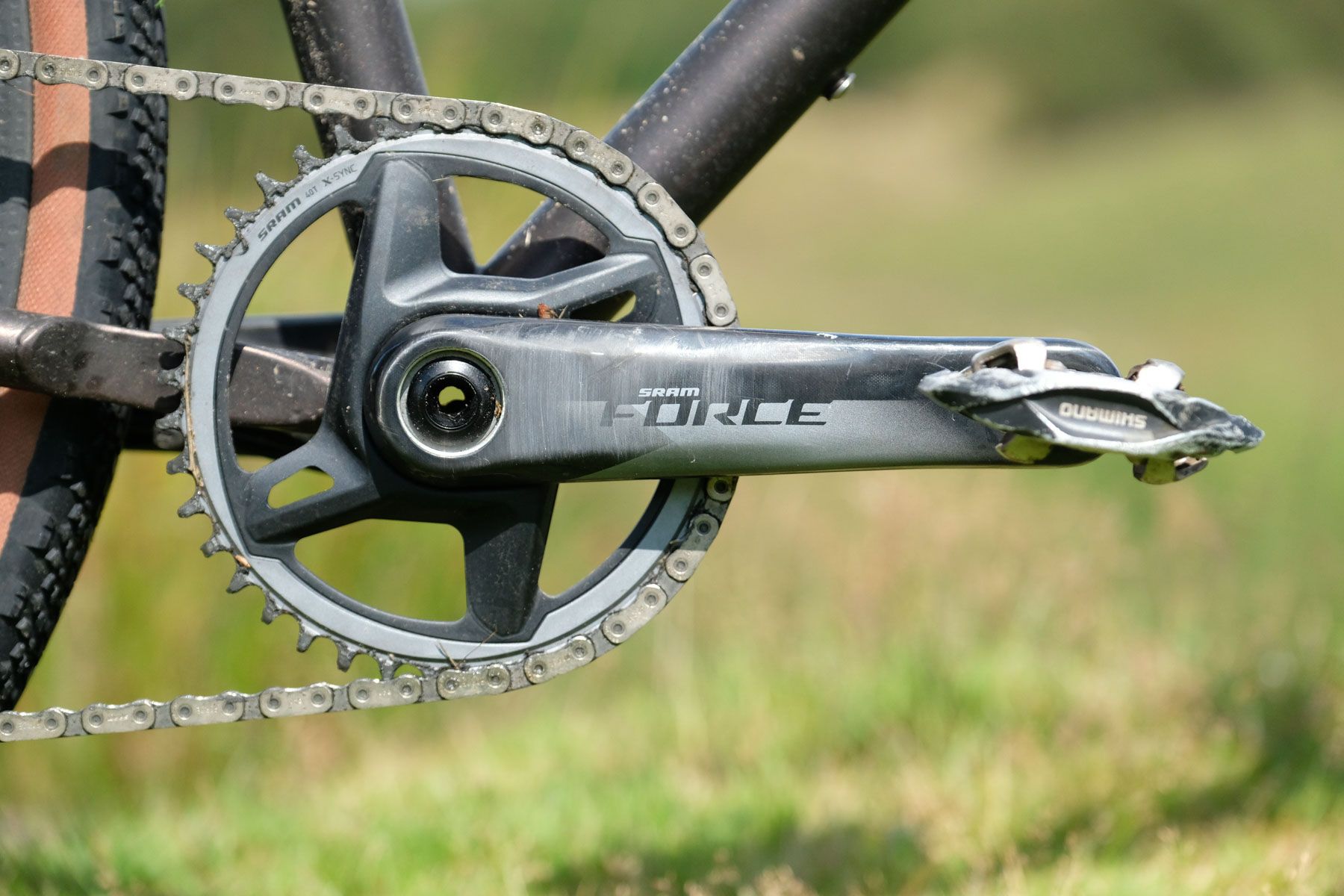
The 10-44T cassette at its heart works well, though I think that some edge-case applications will find it a bit limiting. With the 40T chainring I had fitted, it was a challenge getting up some of our regular local climbs. Possible, but definitely not on a loaded bike or with a tired rider. The 38T ring would help, though that then effects your top gear. It’s not Eagle’s 10-50T. It is possible to run mountain bike Eagle with the XPLR system, but you’d need an Eagle AXS mech, chain and Eagle cassette, so the XPLR carbon cranks and direct mount chainring would be the only remaining bits of the system.
So, with the caveat that you’ll only be buying this groupset if you’re already open to the idea of a more rugged style of gravel, then I think you won’t be disappointed. The shifting has been flawless and the brakes have been more than enough for all the wet riding I’ve done (though after 200km it looks like a pad swap is needed soon).
To sum up this XPLR review: I think we’re going to be seeing this groupset, in its many guises, on a lot of bikes in future. By its nature, it’s a premium product, but my thought is that it deserves that label. It’s been durable and capable – and most of all, it’s made the dull old trails that I’ve been riding over, and over, and over, for the last 18 months wicked fun and got me out in weathers that would normally see me hiding in a bottle of sherry with the fire and a film on. How do you put a price on that?
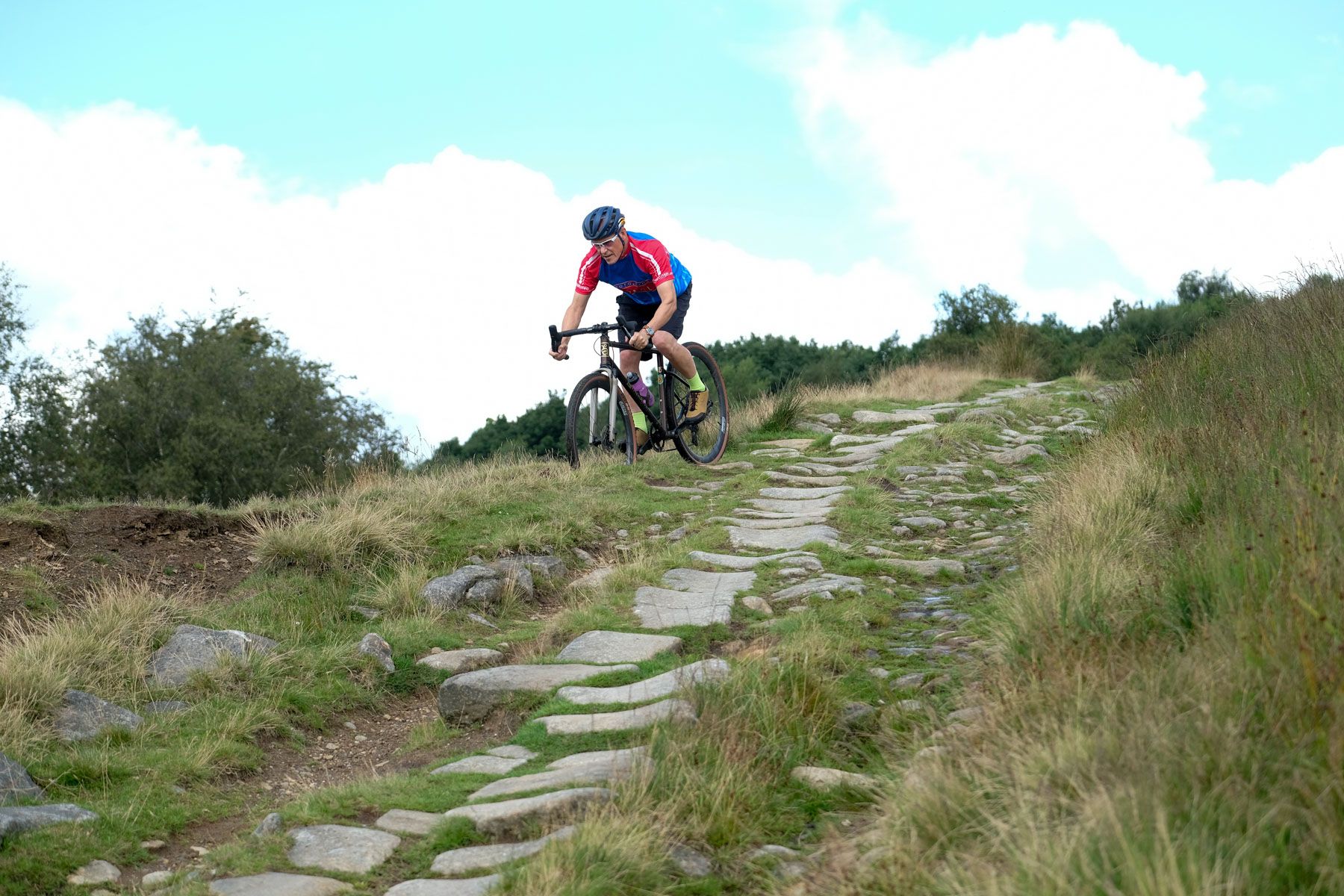
For more info and cool films and stuff, head over to sram.com and for more on Ra Bikes, check them out on the Instagrams.
Comments (4)
Leave Reply
Post Comment
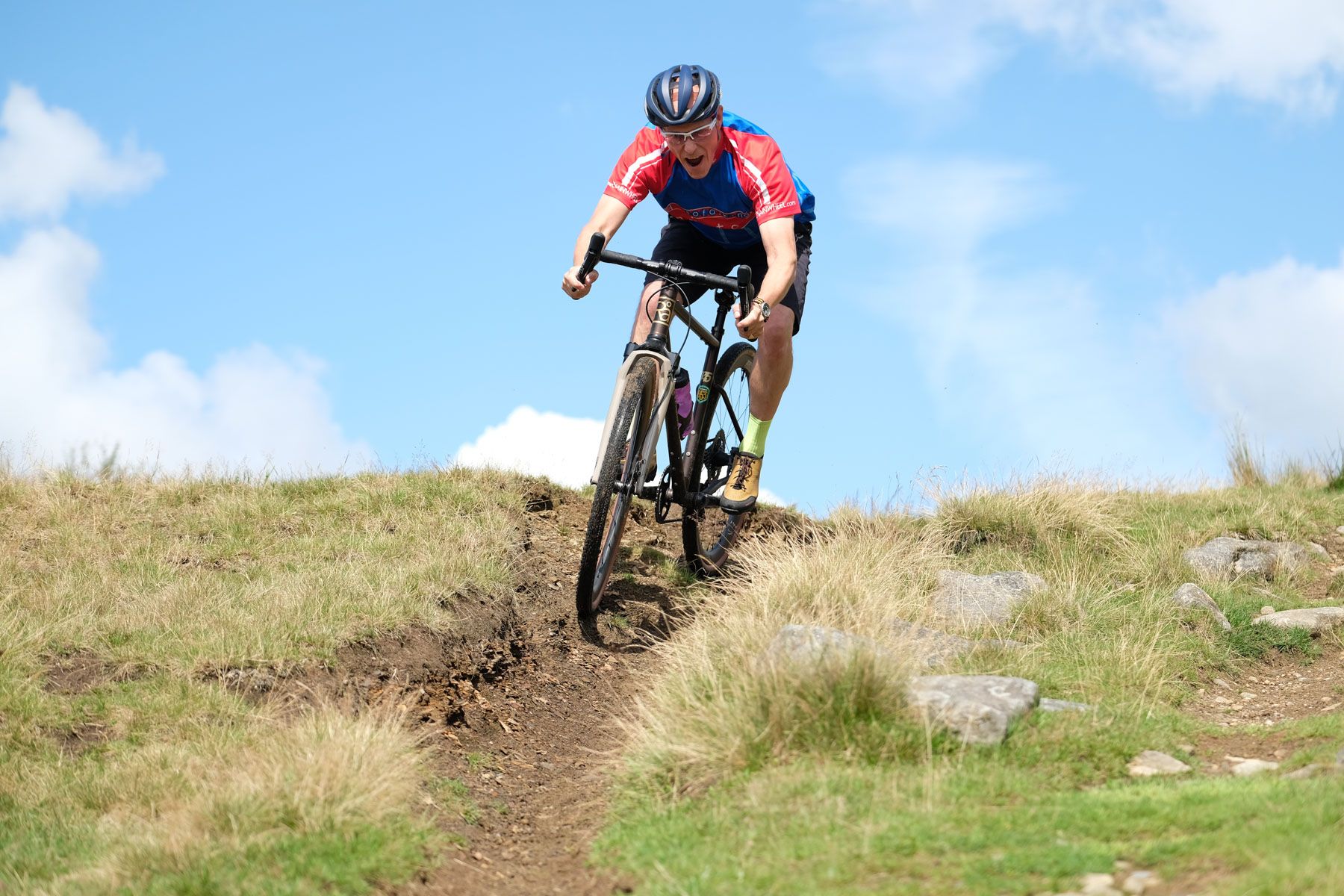
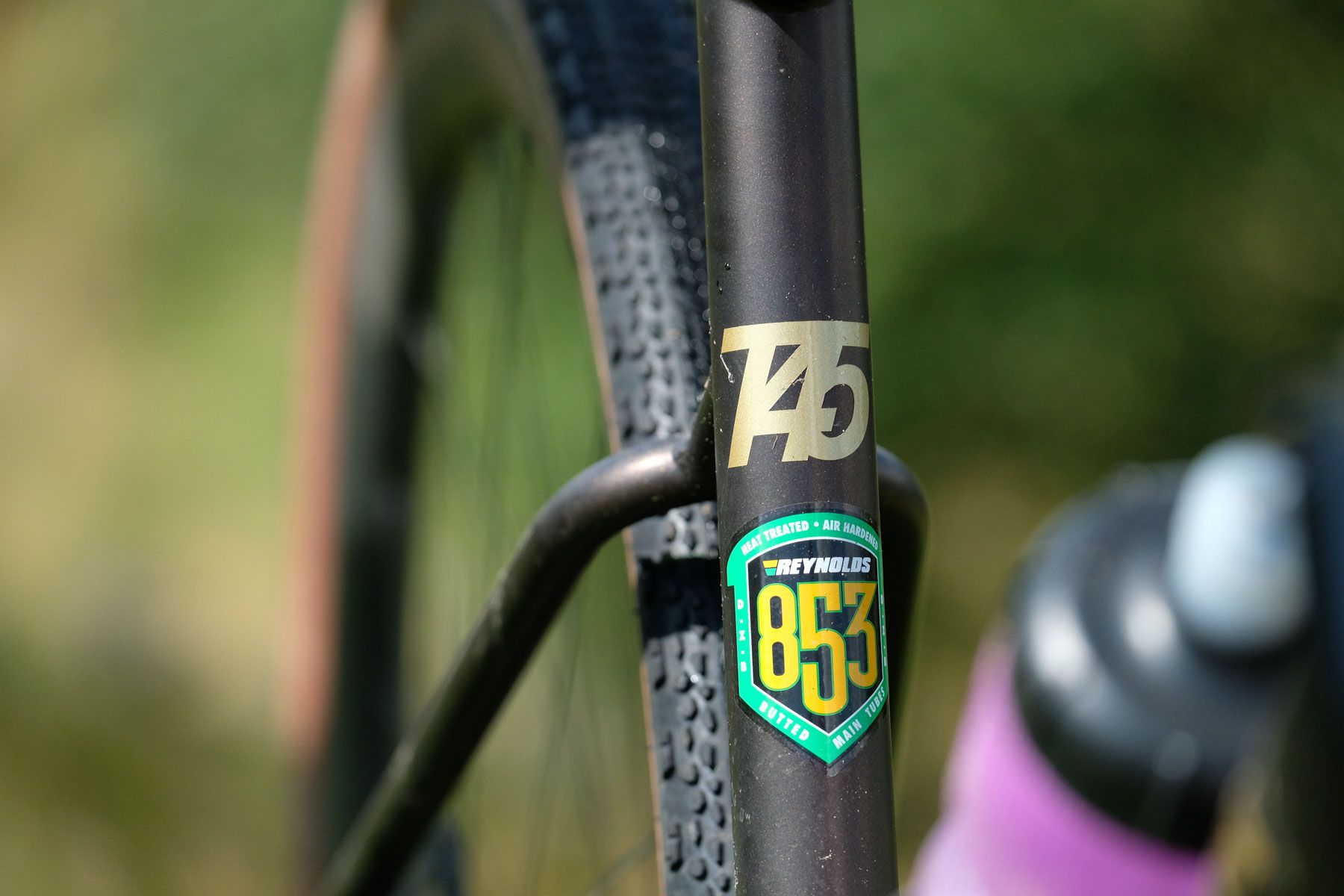
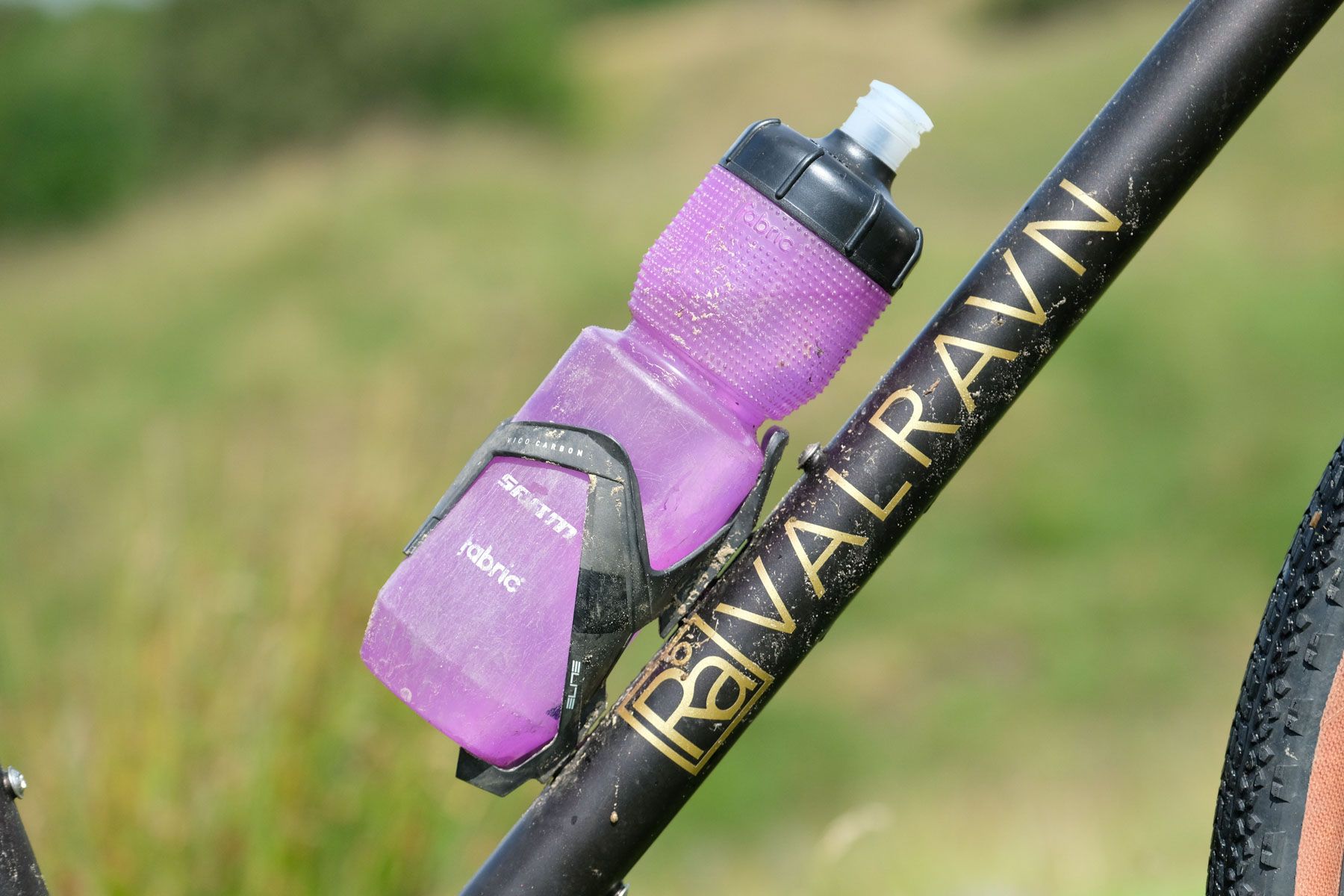
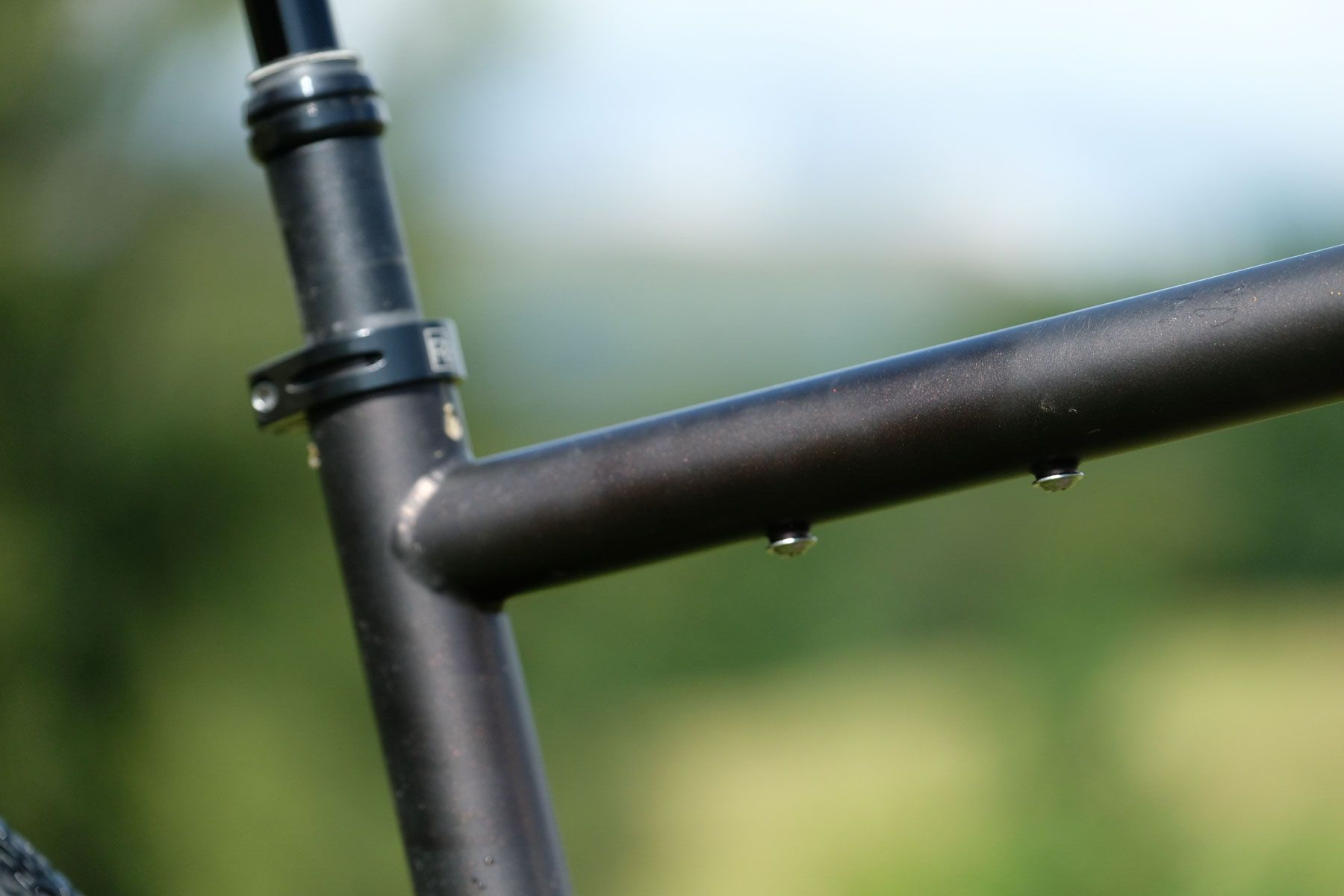
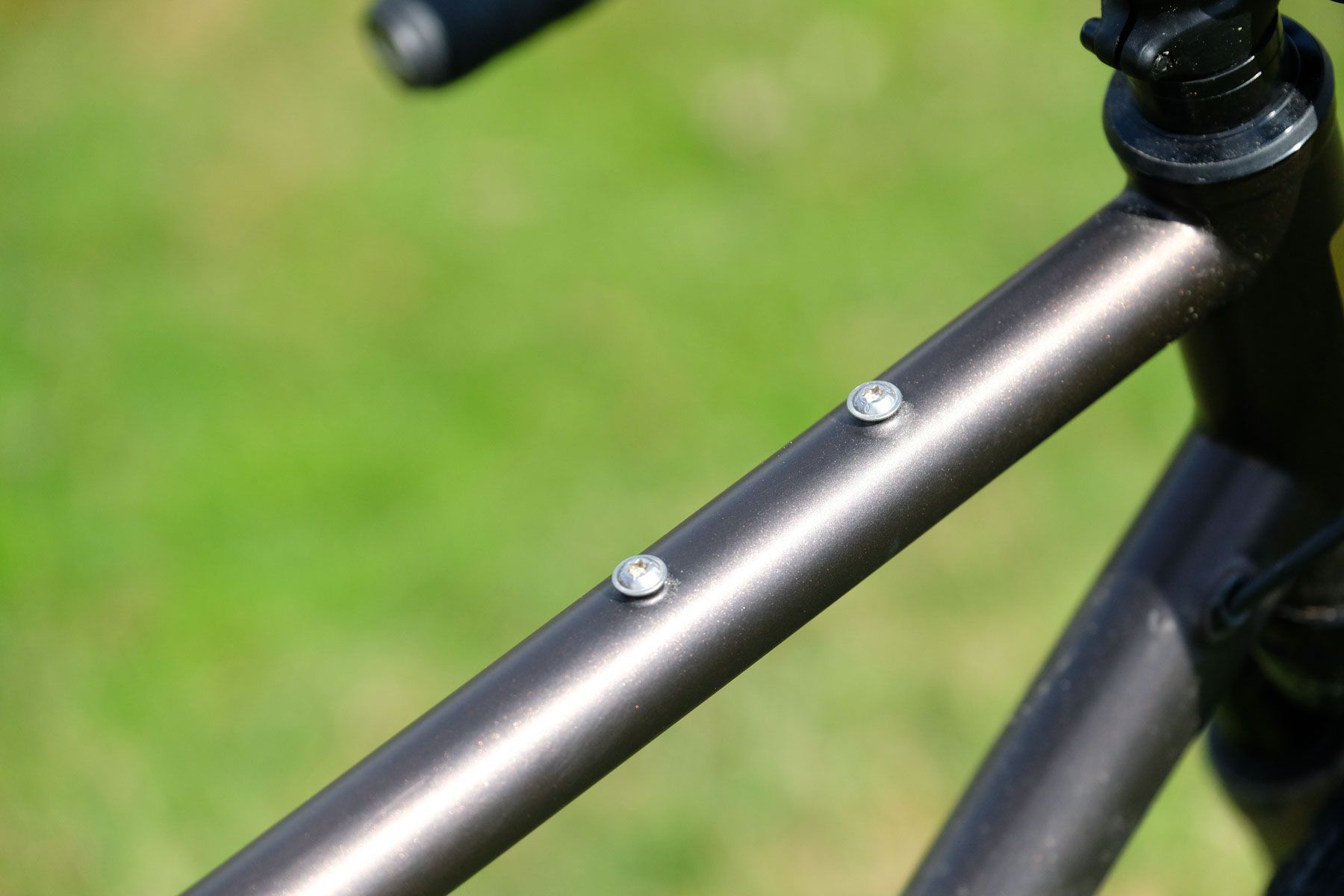
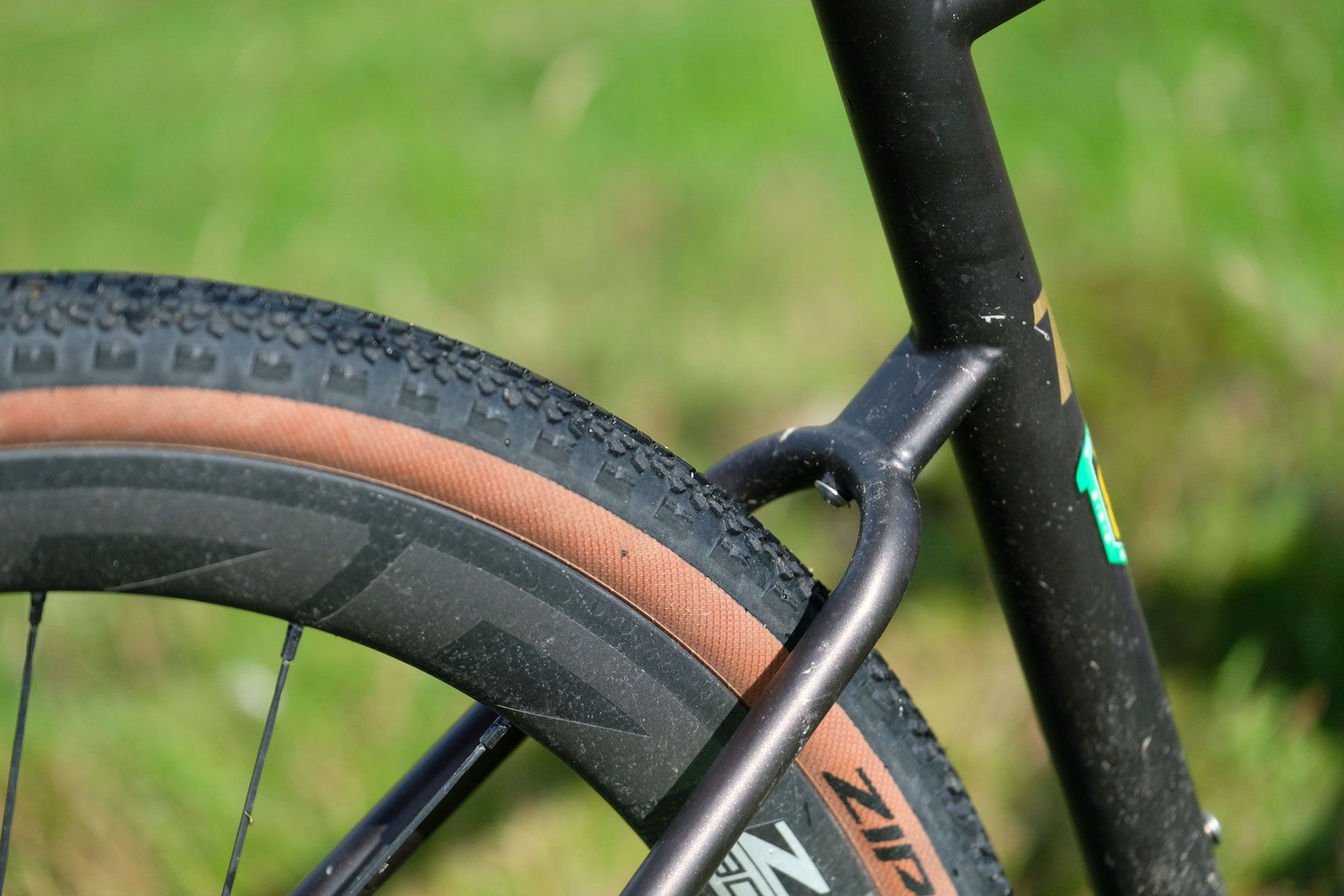
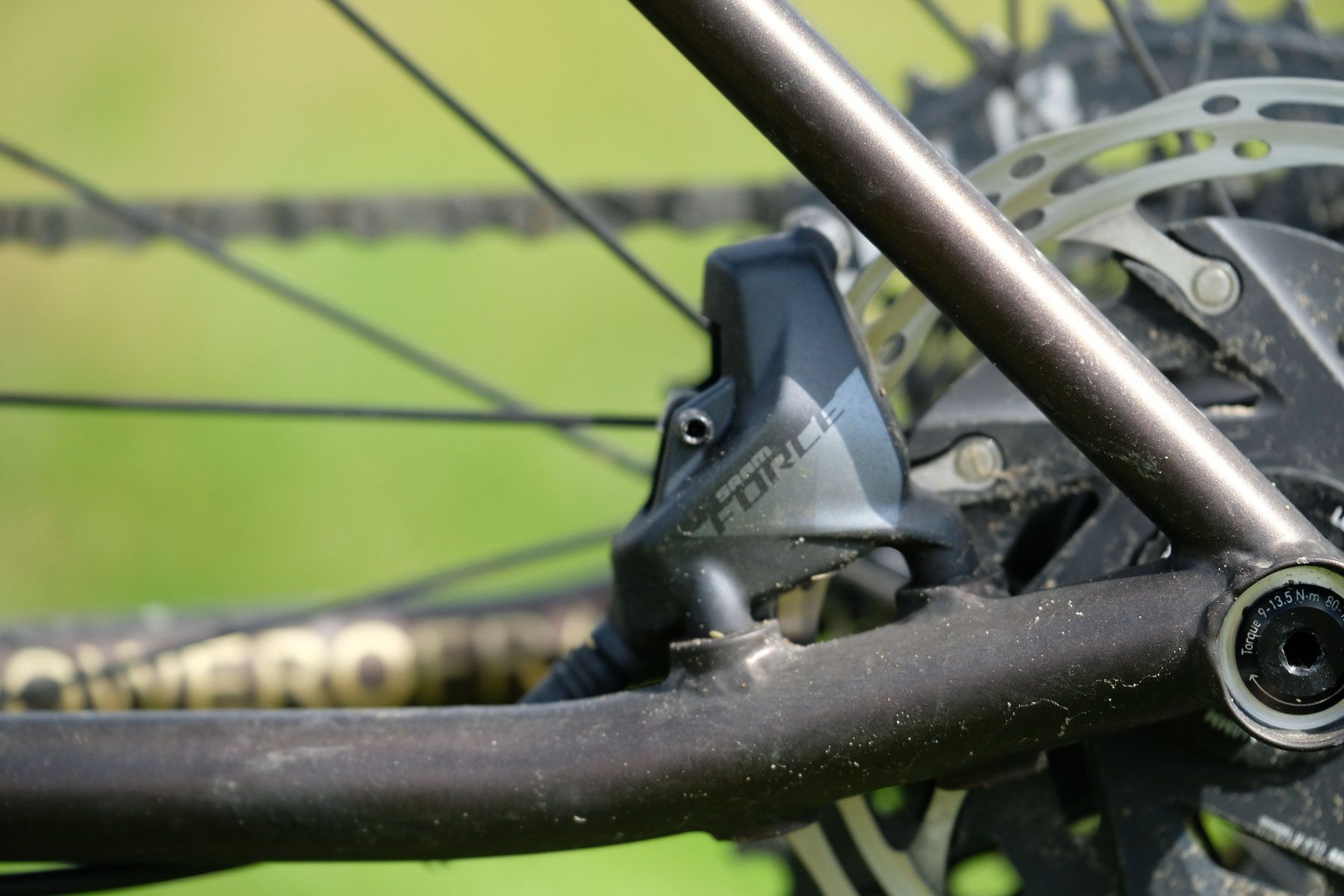

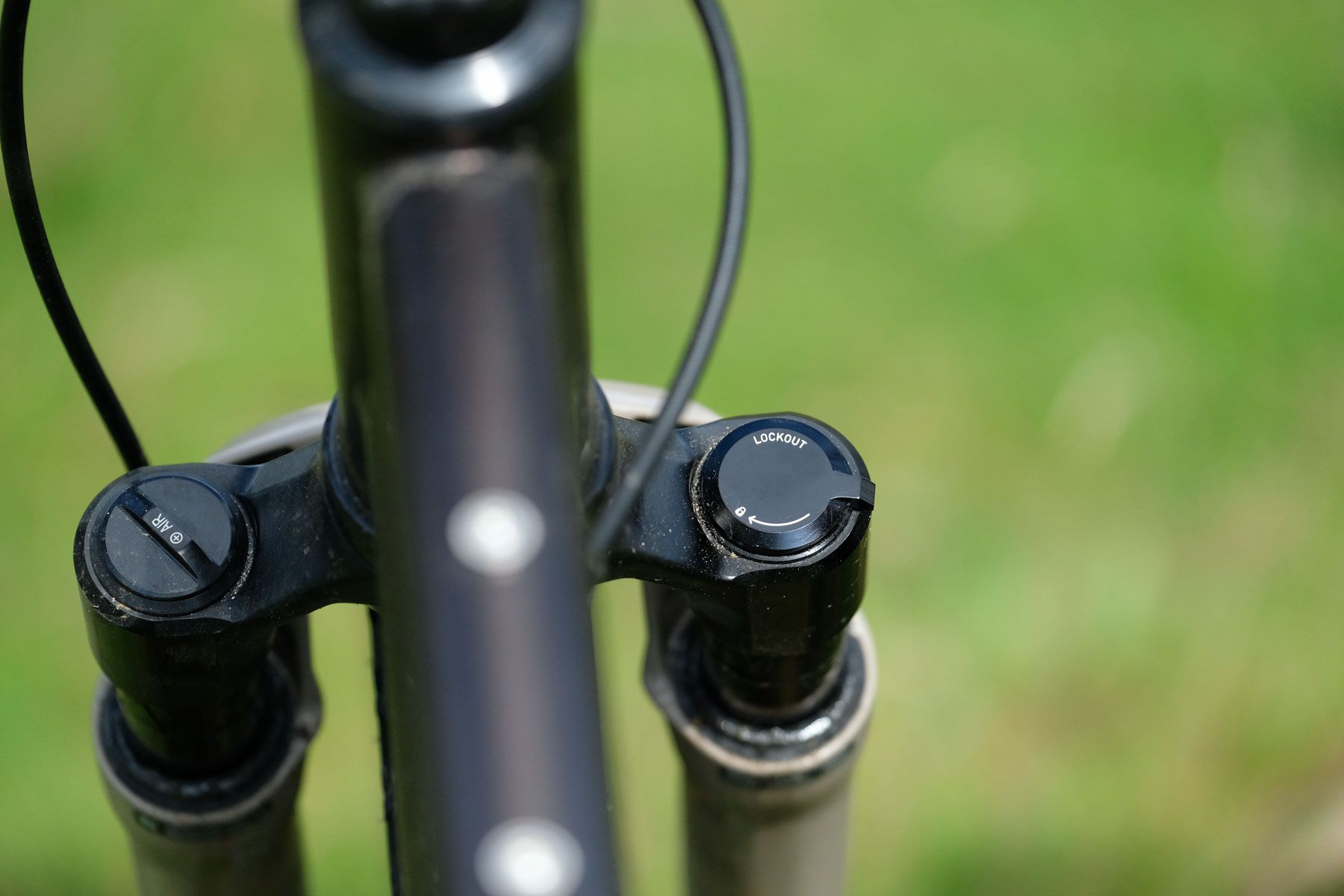


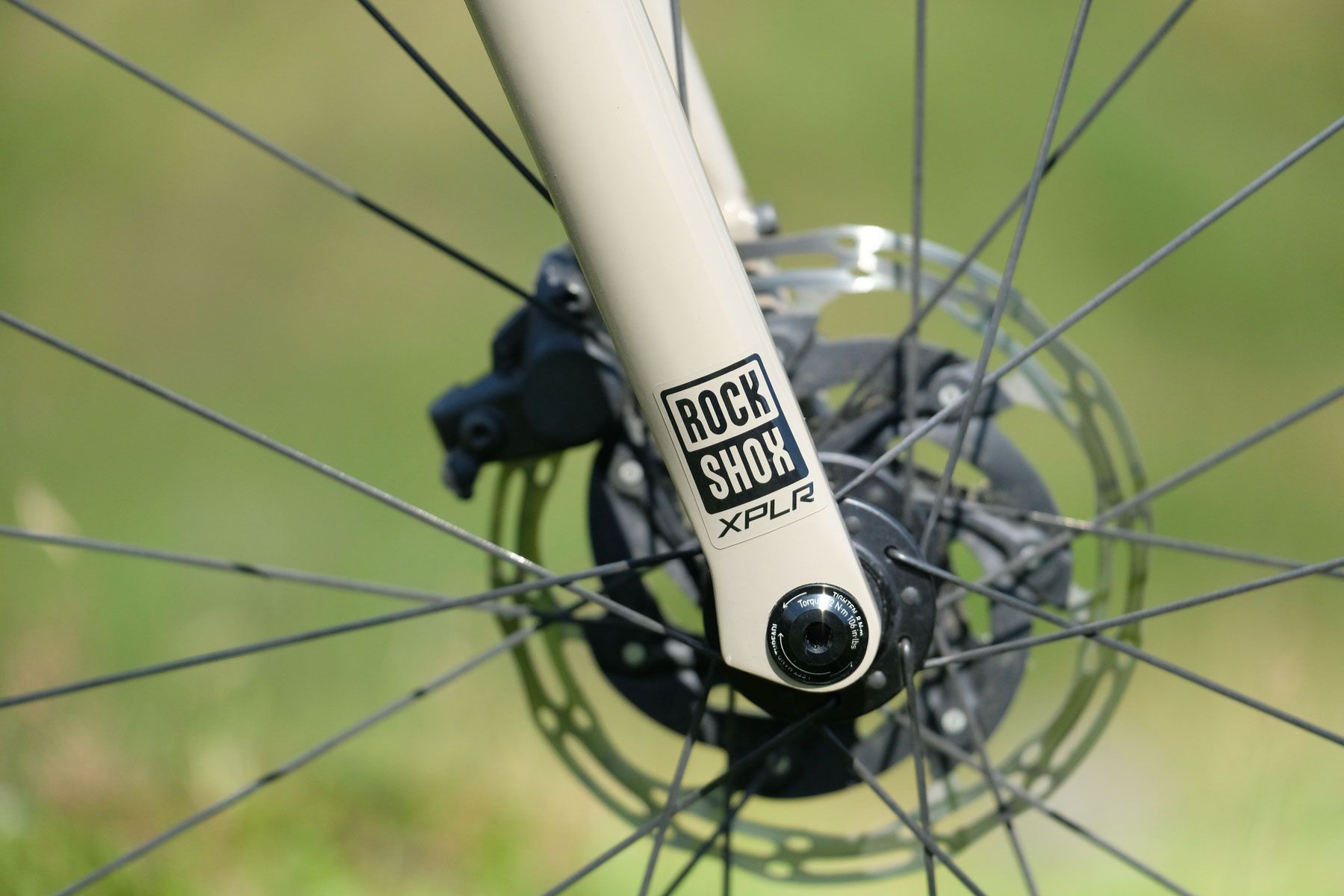
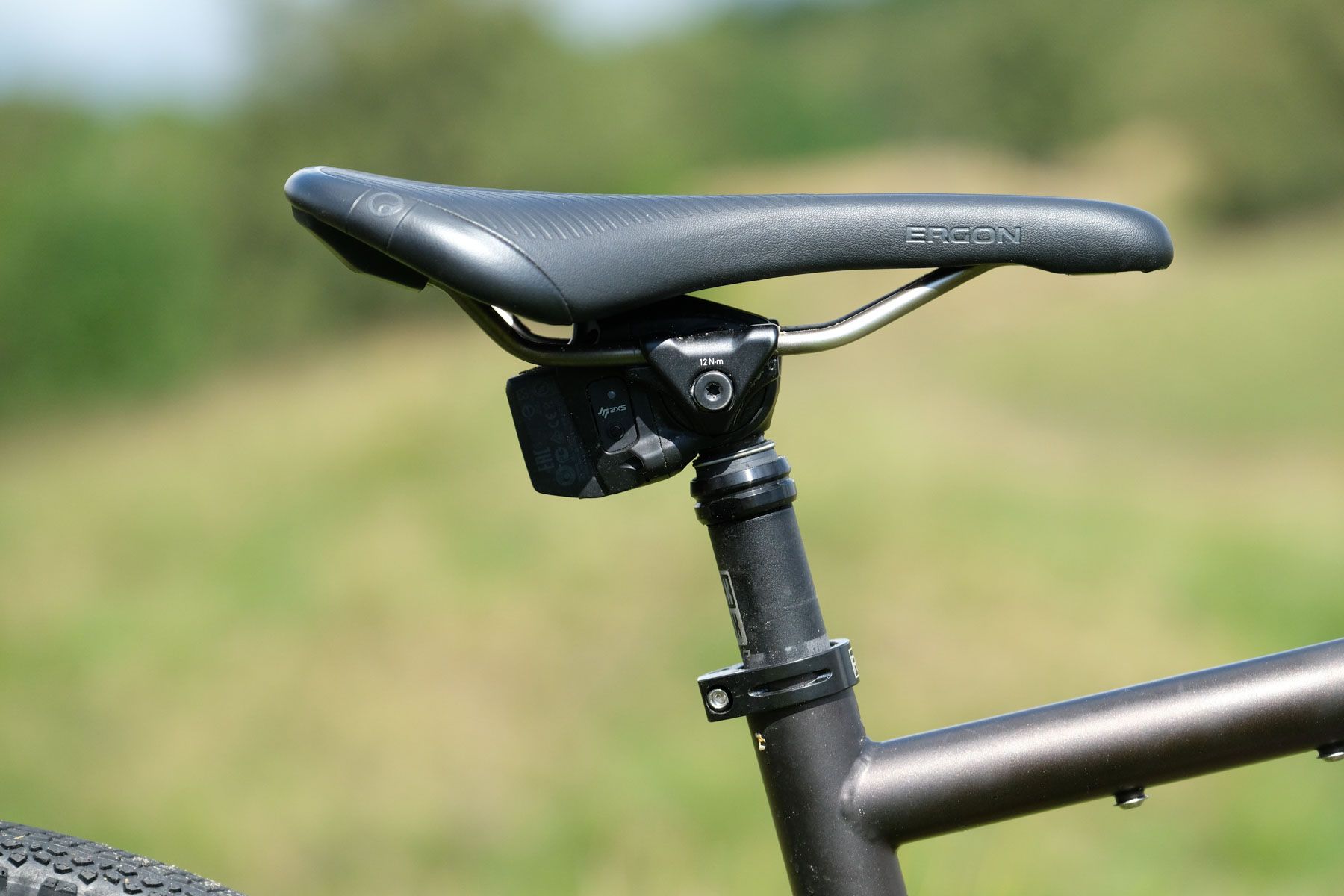
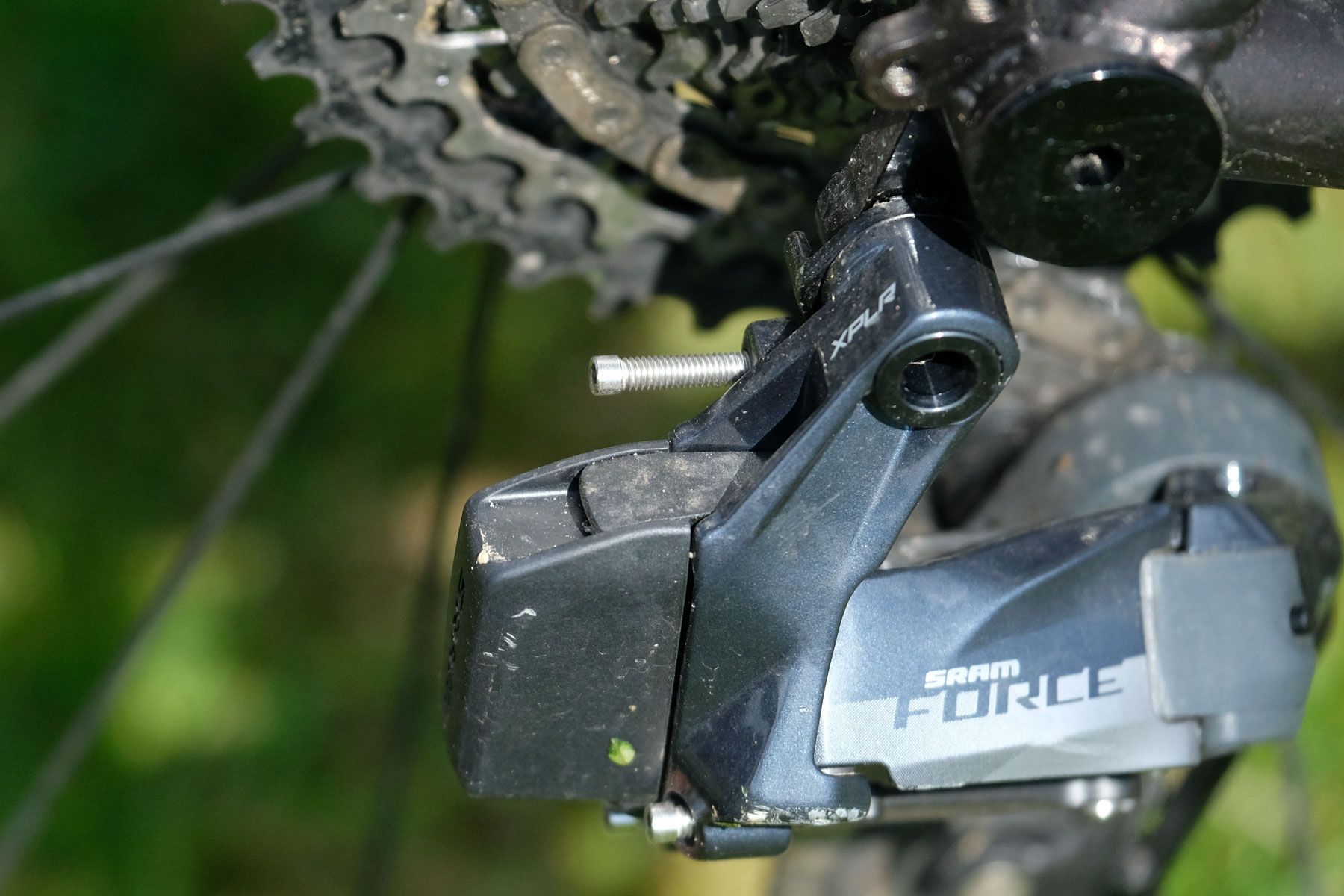
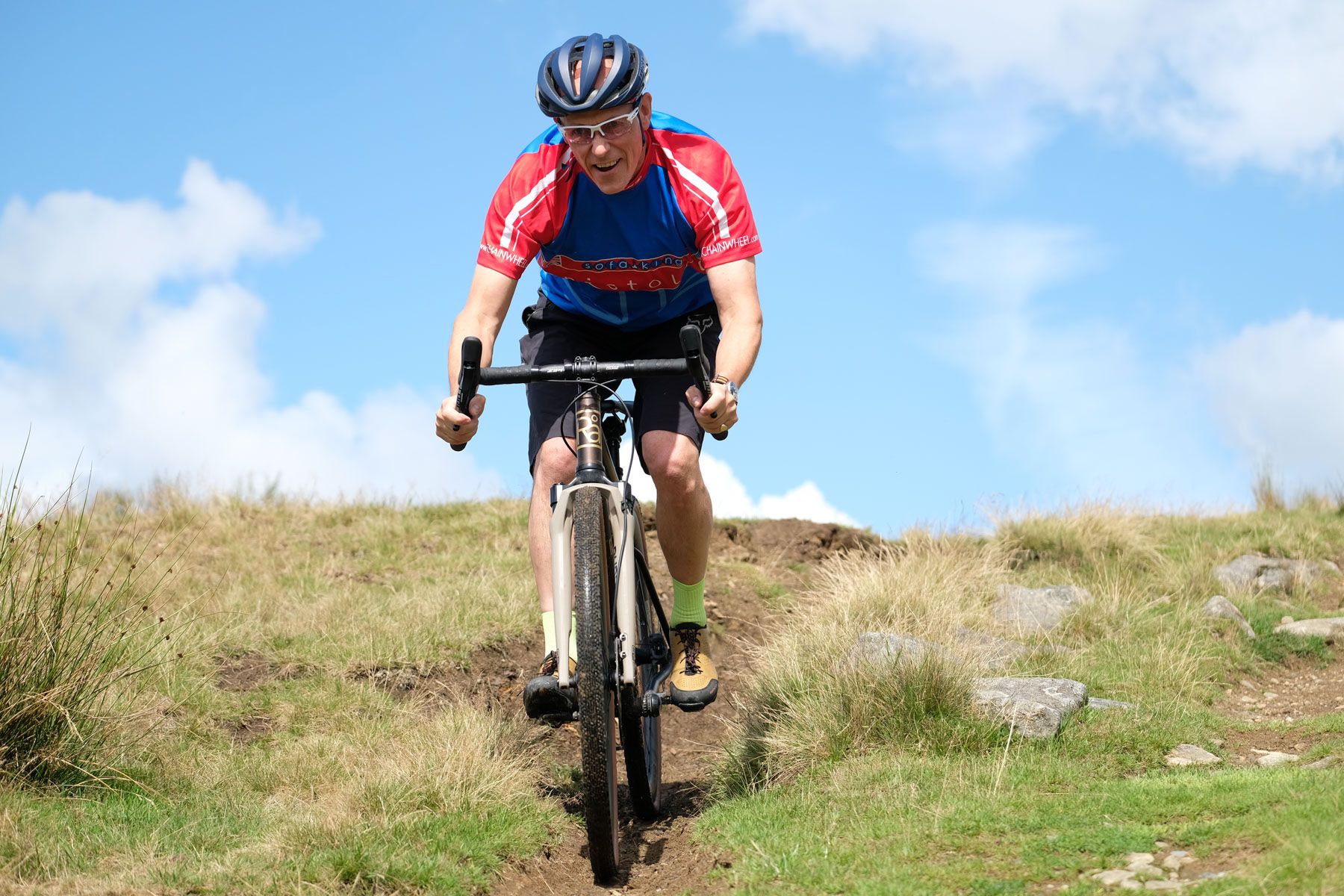

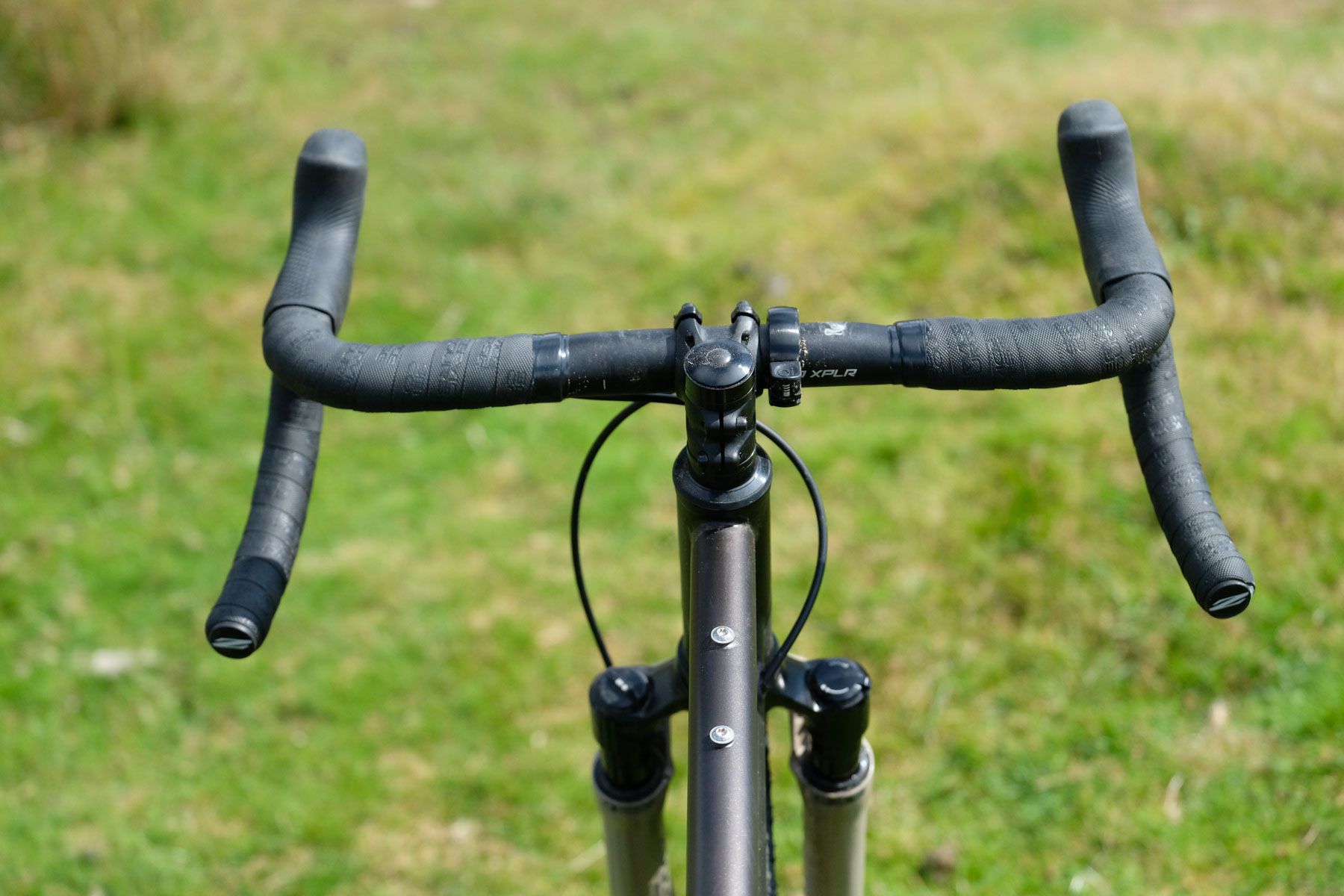

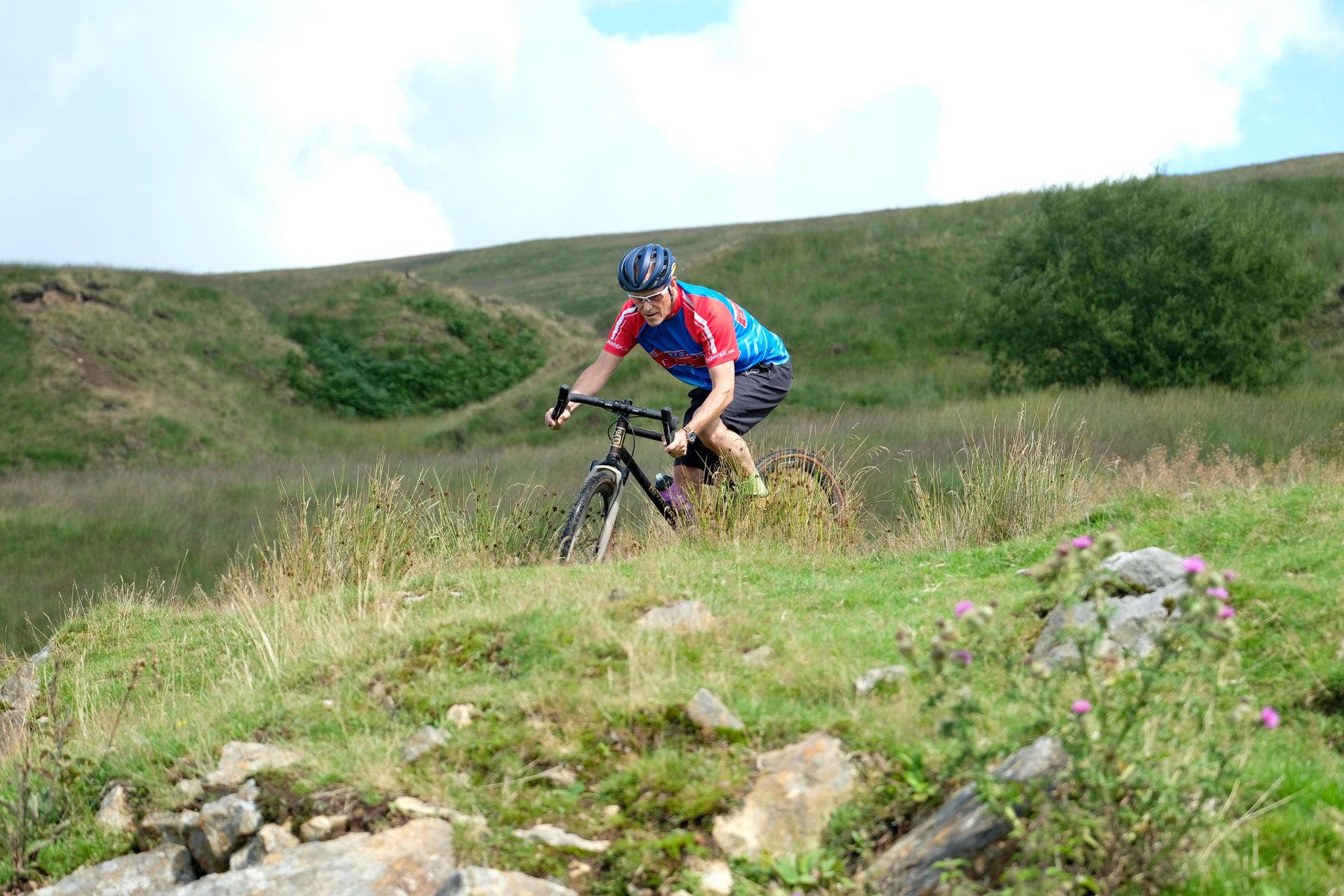
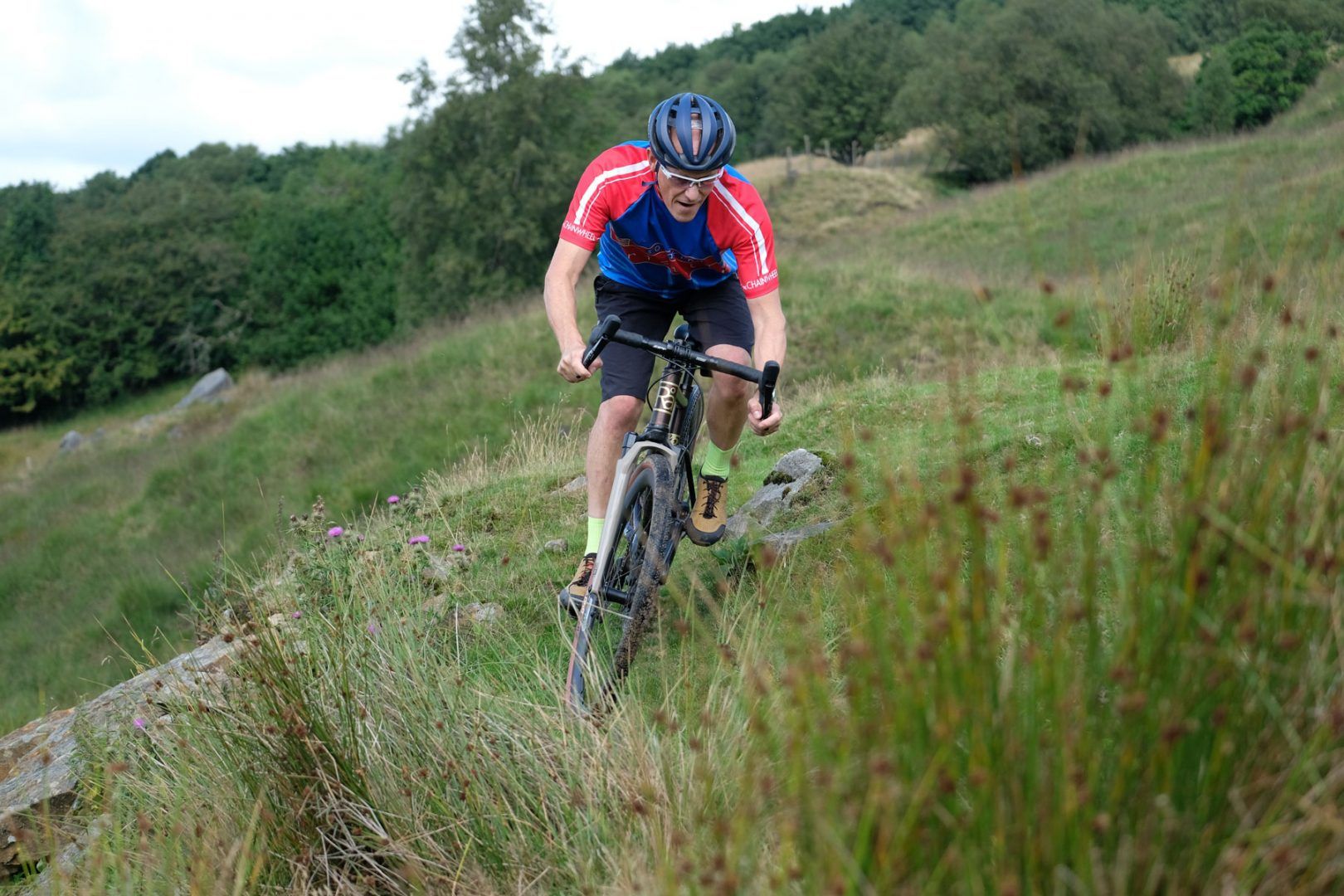
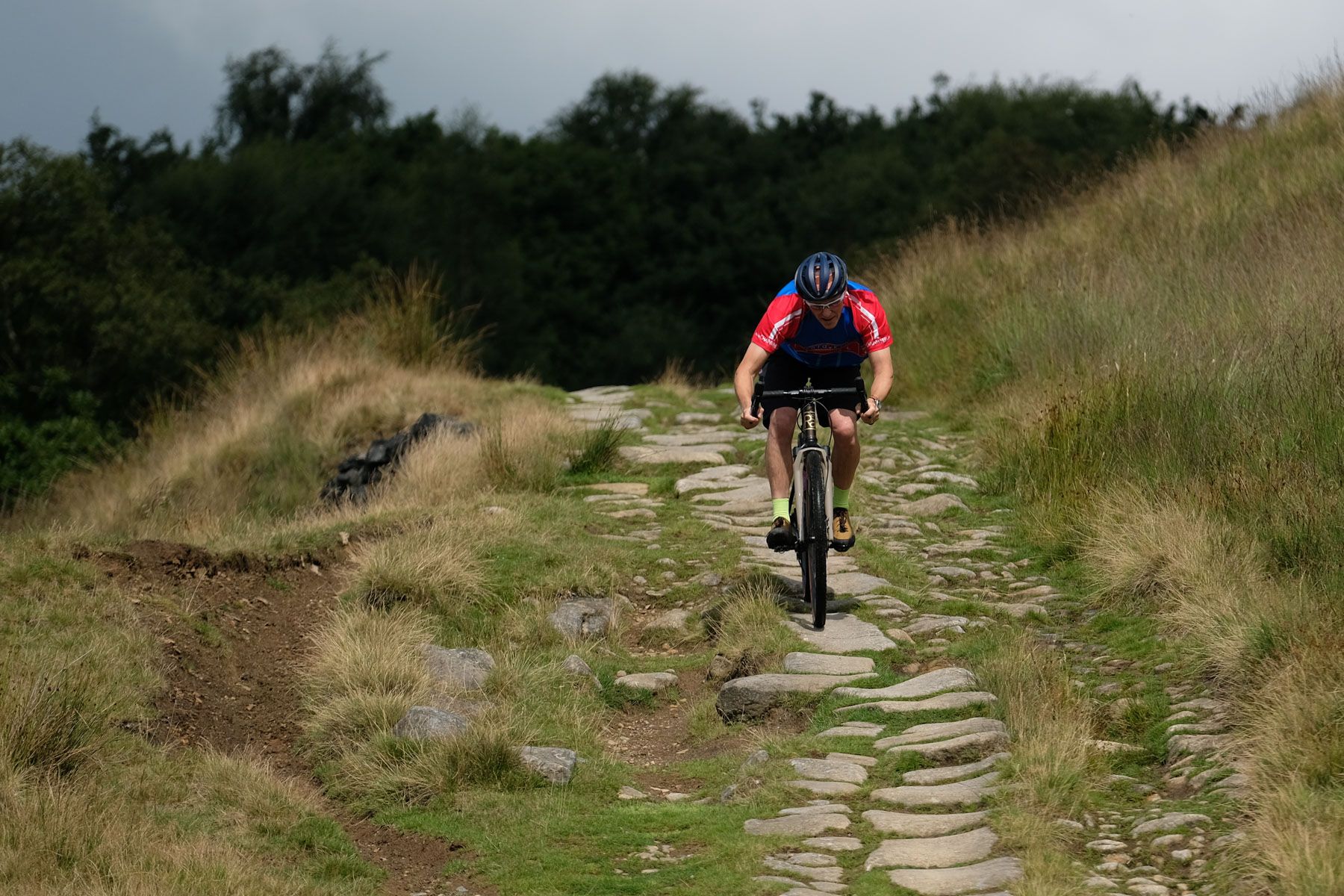
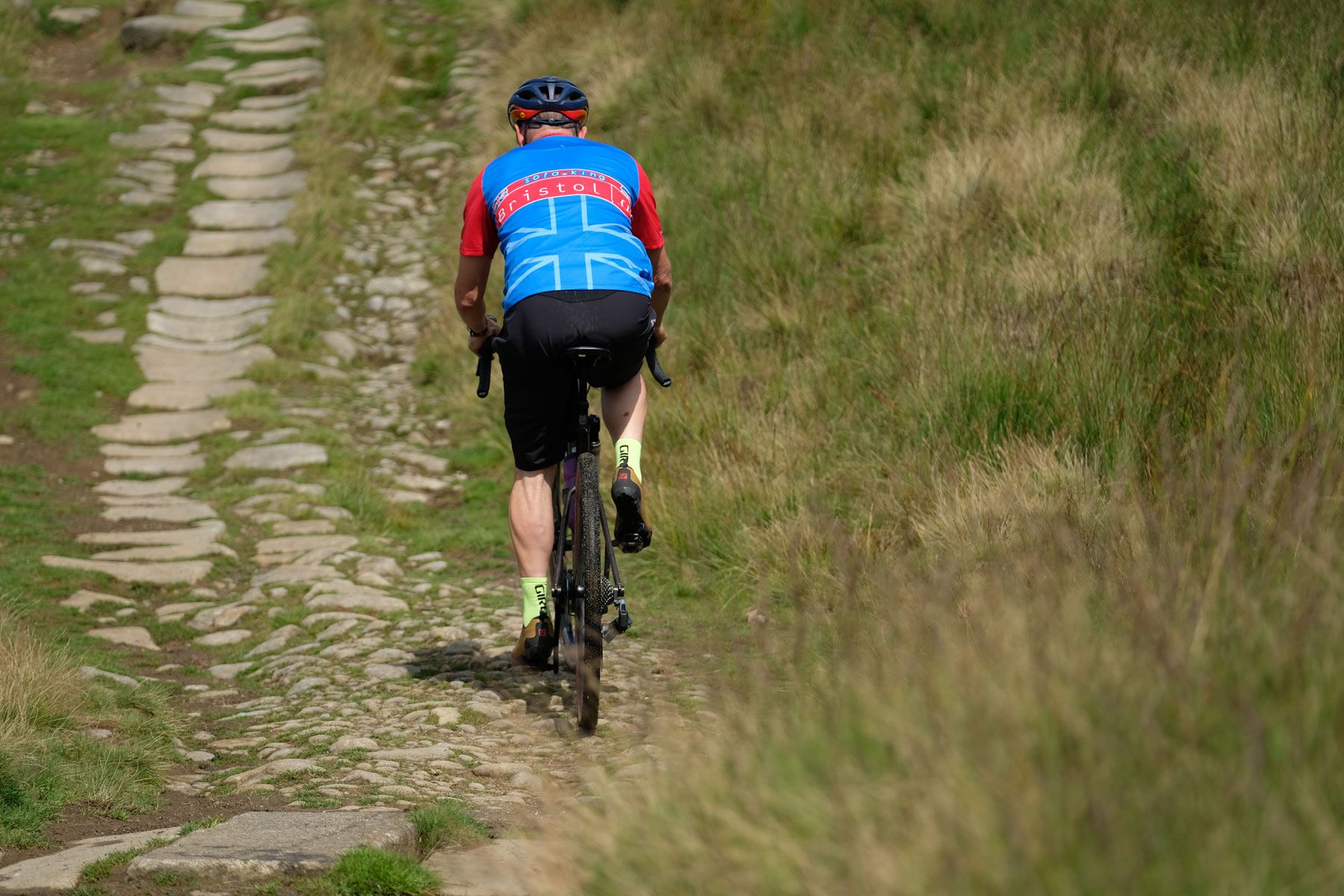
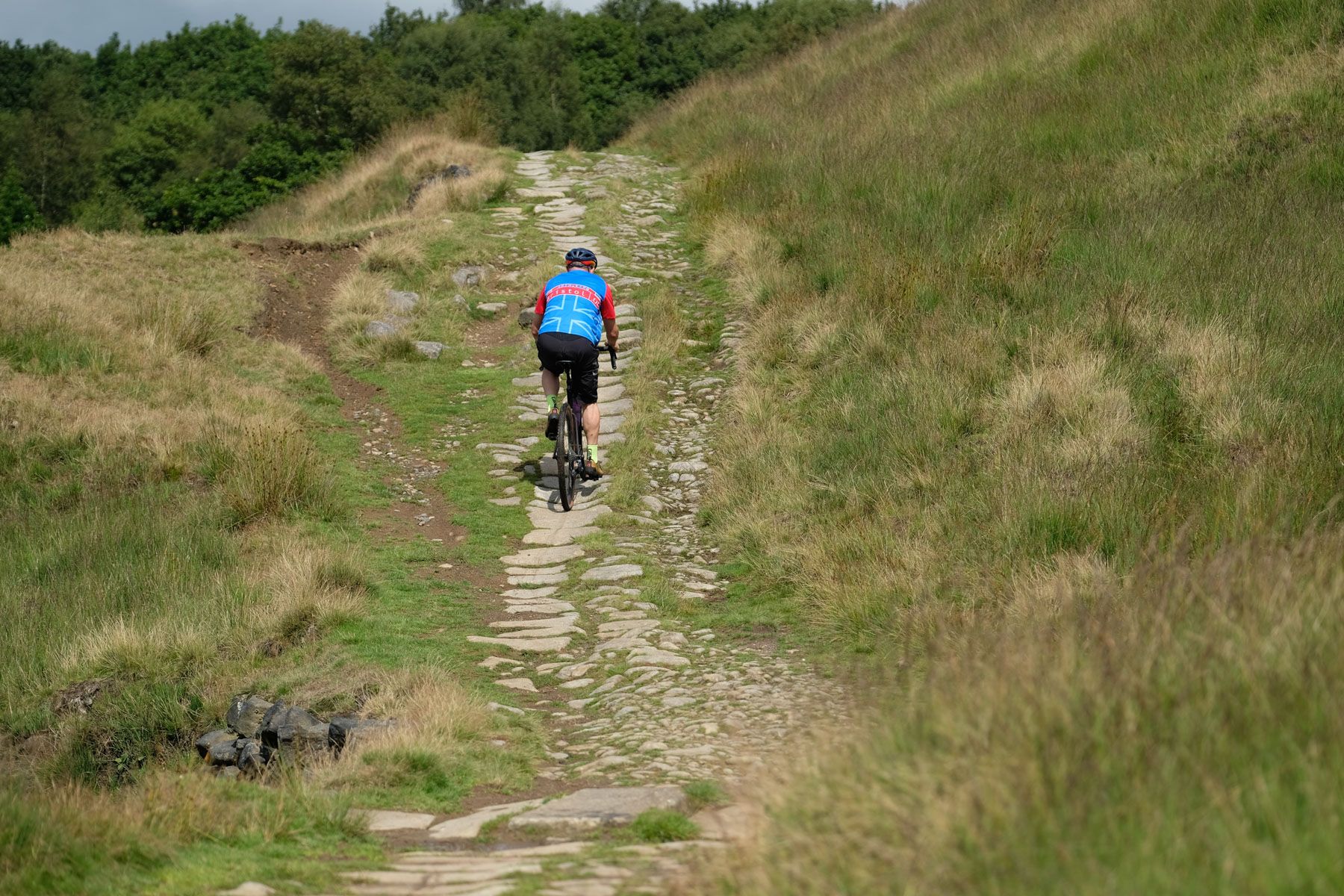
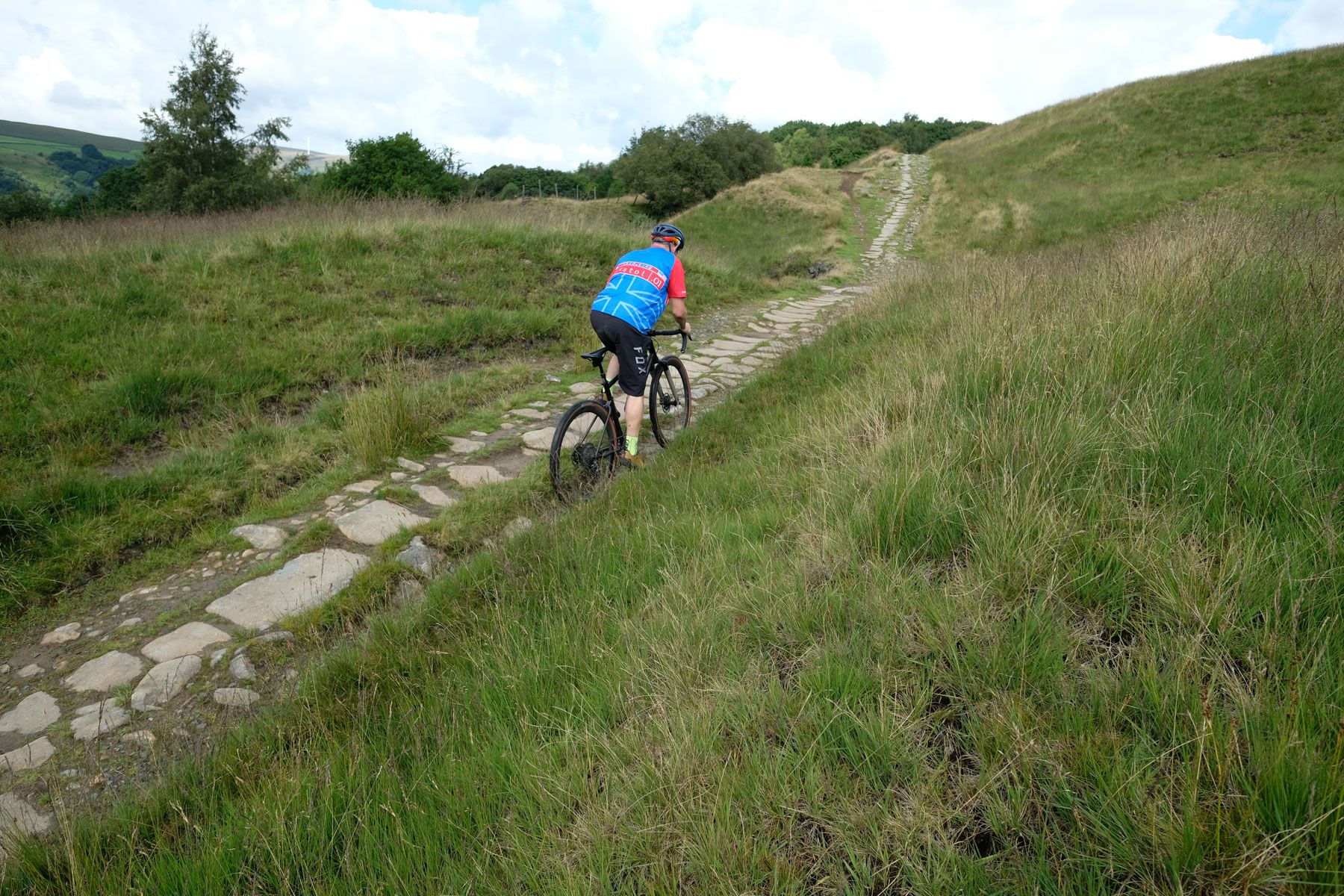
That frame looks lovely.
I think that’s the equivalent of what’s known in the motoring world as a rest-o-mod..
I’m more interested in the frame than the SRAM….
Baggies on a drop bar bike? Discuss… Absolutely! None of this lycra only nonsense, we’re mountain bikers.